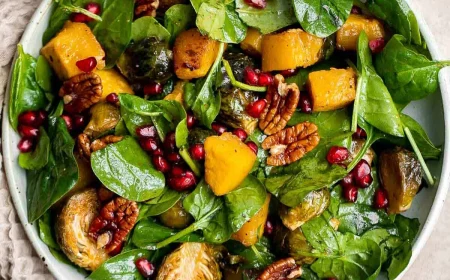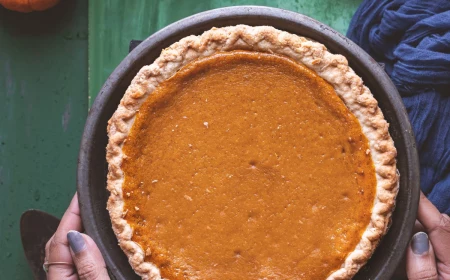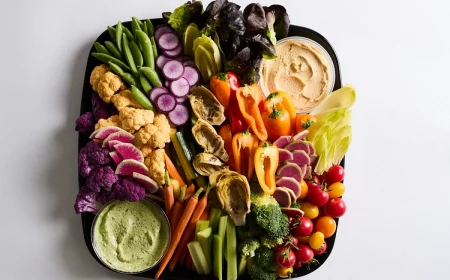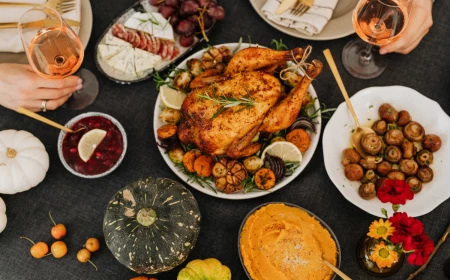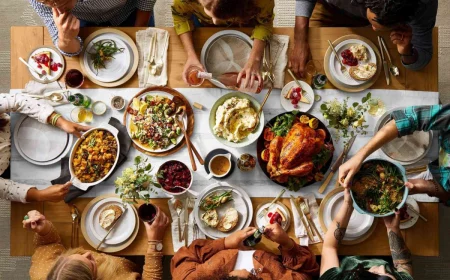How to Layer Your Thanksgiving Decor Like a Designer
After years of setting up holiday spaces, from sprawling hotel lobbies to cozy family homes, I’ve figured out a secret. The best, most memorable Thanksgiving vibe doesn’t come from a pre-made kit at a big-box store. Nope. It’s built, layer by layer, with things that feel real—texture, warm light, and the honest story of the season.
In this article
So many of us get stressed trying to create a perfect, magazine-ready scene. But honestly, the most successful designs I’ve ever pulled off weren’t about being perfect. They were about being authentic. They used materials that actually meant something to the family or felt true to the location, which is what makes a space feel truly warm and welcoming.
This isn’t just a shopping list of trendy items. Think of this as a peek into a professional’s playbook. We’re going to go way beyond just plunking a pumpkin on the table and calling it a day. We’ll get into how to choose your materials, build a look that hangs together, and do it all safely. Let’s get you set up to create a Thanksgiving space that feels 100% you.
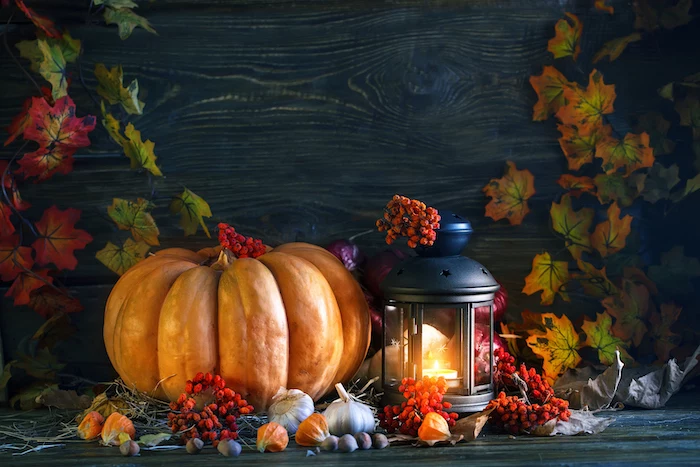
The ‘Why’ Behind Good Design
Before we even think about touching a pine cone, we have to talk about the ‘why.’ A beautiful room doesn’t just happen by accident. It’s always the result of a few core design principles working in harmony. Once you get these concepts, you can apply them to any room, any season, and any style you like. It’s the difference between a random pile of stuff and a thoughtful, cohesive design.
Working with Autumn’s Color Palette
The colors of fall are a total gift, but you need a little strategy to use them well. Instead of just grabbing everything orange, red, and brown, try thinking in terms of a structured palette.
For a really calm and sophisticated look, I love using a monochromatic scheme. This just means you’re using different shades and tints of one single color. Picture a table built with pale cream pumpkins, off-white linen napkins, bits of birch bark, and soft beige candles. The whole effect is incredibly elegant and serene.
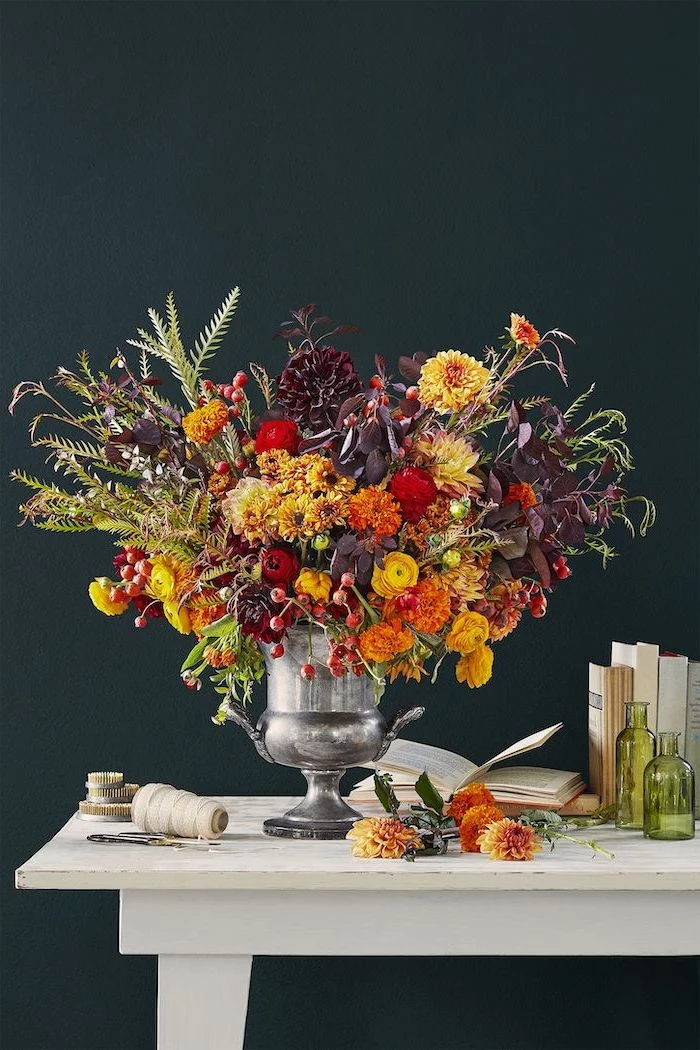
If you’re after a more classic, vibrant feel, an analogous color scheme is your best friend. These are simply colors that sit next to each other on the color wheel, like red, orange, and yellow. The trick is to pick one color to be the star of the show and use the others as accents. For example, you could start with a deep rust-red tablecloth as your base, then bring in smaller pops of orange with gourds and yellow with some goldenrod flowers. It creates a ton of energy without feeling chaotic.
The Magic of Layered Lighting
Lighting is probably the single most overlooked part of decorating, but it has the biggest impact on the mood of a room. A single, harsh overhead light is a vibe-killer; it makes everything feel flat and cold. My approach always, always involves at least three layers of light.
- Your Base Layer (Ambient): This is just the room’s general lighting, usually from a ceiling fixture. A dimmer switch here is non-negotiable. Seriously. You can get one at Home Depot for about $25, and it’s a game-changer. Turning the main light down to about 50% power instantly makes a space feel more intimate.
- Your Helper Layer (Task): This is focused light for specific zones, like the buffet table or the drink station. A small, stylish lamp on a sideboard doesn’t just help guests see what they’re doing; it creates a warm, inviting little bubble of light.
- Your Sparkle Layer (Accent): This is the fun part! This layer is all about creating drama and focus. We’re talking about candles on the dining table, a tiny uplight tucked behind a big floral arrangement, or those delicate fairy lights woven into a garland on the mantel. This is what creates depth and that magical holiday sparkle.
A quick note on light bulbs: stick to bulbs in the 2200K to 2700K (Kelvin) range. This gives you that warm, yellowish glow that feels like firelight—our brains are wired to find it comforting. Anything over 4000K gives off a cool, blue-white light that’s better suited for an office, not a cozy gathering.
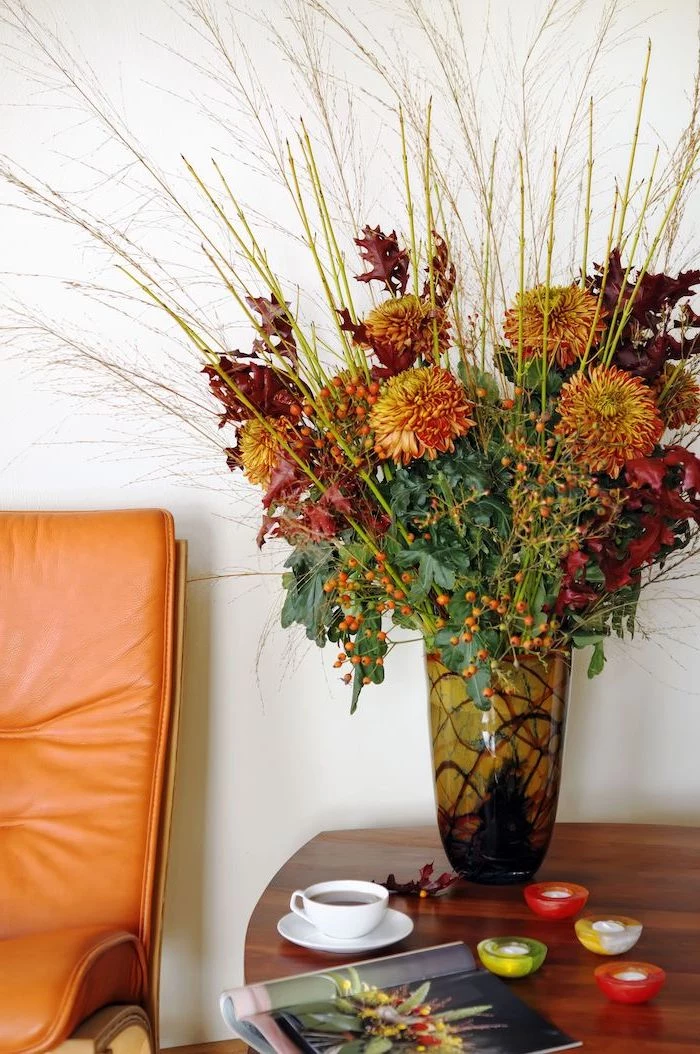
Using Texture and Scale for a Pro Look
A room where everything is smooth and uniform just feels… boring. The secret to a rich, professional-looking space is contrast. Pair the rough, fibrous husk of a corn stalk with the smooth, waxy skin of an apple. Lay a rustic, loose-weave burlap runner under sleek, polished silverware. Gather different textures: woody branches, fuzzy lambs-ear leaves, crunchy dried oak leaves, the glassy shine of cranberries. This variety engages more than just the eyes; it makes the whole environment feel more real and grounded.
Scale is all about relative size. A super common mistake is using decor that’s just too small for the space. A tiny little centerpiece on a massive 10-foot dining table looks timid and lost. On the flip side, a giant arrangement on a small bistro table feels overwhelming. Before you start, take a second to assess your space. Got high ceilings? You can handle tall, dramatic branches. A long, narrow mantel? It needs a low, sprawling garland, not a single, tall vase.
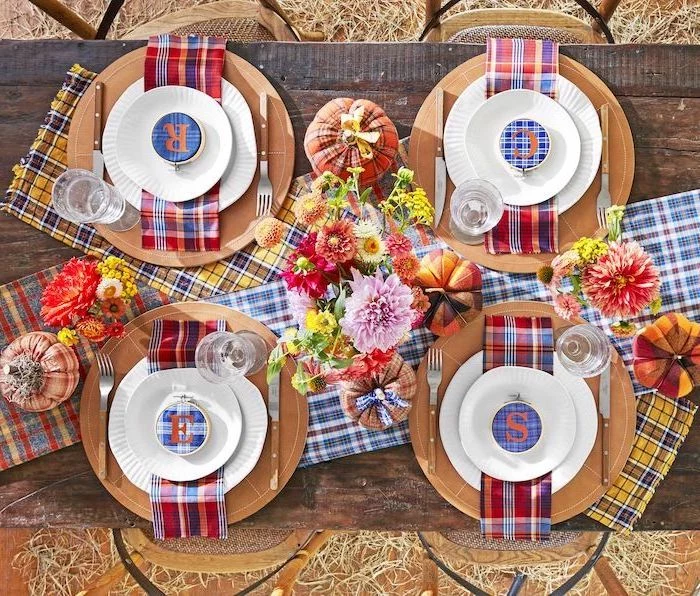
Quick tip: I always tell my team to avoid the “polka dot” effect. Cluster your elements in groups of three or five. A trio of small gourds nestled together looks intentional and stylish. Three gourds spaced evenly apart just looks random.
Getting Your Hands Dirty: Pro Techniques
One of the best things about Thanksgiving decor is that so many of the best materials are free! A walk in your backyard or a trip to the farmers market can provide almost everything you need. But using these natural goodies requires a little prep work to make sure they’re clean, bug-free, and will last.
Foraging, Cleaning, and Preserving
Bringing the outdoors inside is fantastic, but you don’t want to bring in unwanted guests. I learned this the hard way years ago after setting up a gorgeous woodland theme in a client’s home, only to get a mortifying call about tiny spiders crawling out of the pine cones. Never again.
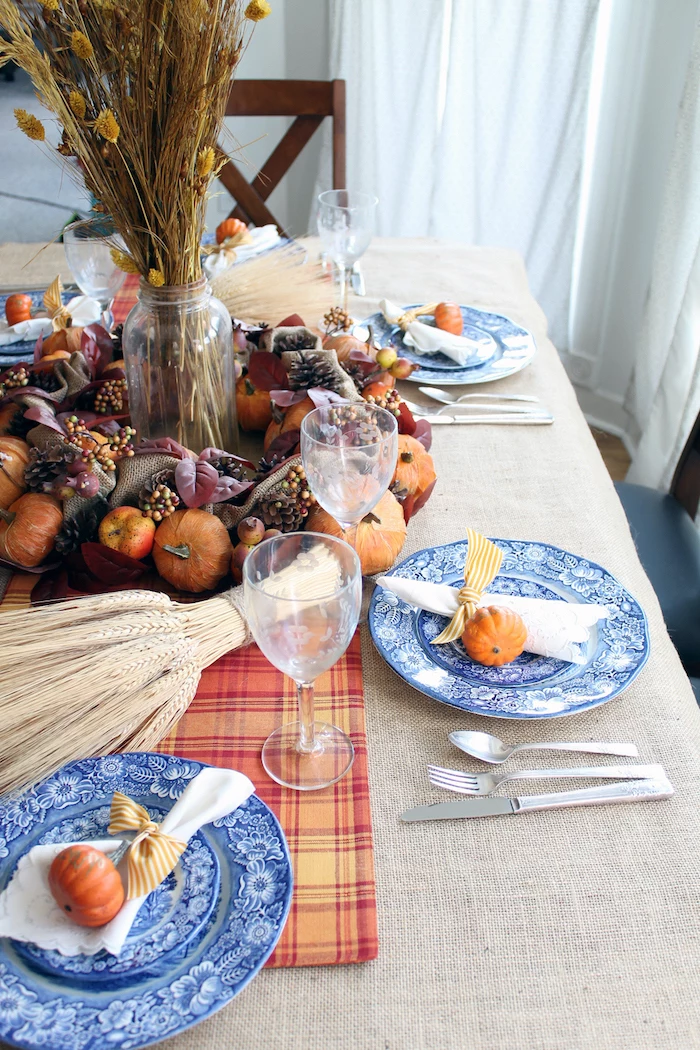
So, here’s my ironclad rule: every single foraged item gets a quick heat treatment. It’s super easy:
First, preheat your oven to a low 200°F (that’s about 93°C). Don’t go any higher, or you risk scorching your treasures. Line a baking sheet with foil, spread your pine cones, acorns, or small branches in a single layer, and bake them for about 45 to 60 minutes. This is just enough to kill any lingering insects and dry out sap without any fire risk. As a bonus, the heat makes closed pine cones open up beautifully.
For preserving autumn leaves, you have a couple of options. If you just want something for a quick craft, pressing them between sheets of wax paper with a warm iron works. It’s fast, but it can leave a waxy film and make the leaves brittle. For arrangements where you want leaves to be soft and vibrant, a glycerin bath is the pro move. Just mix one part glycerin (you can find it for a few bucks at any pharmacy) with two parts water. Submerge the fresh leaves and let them soak for two or three days. When you pull them out, they’ll be pliable and hold their color for weeks.
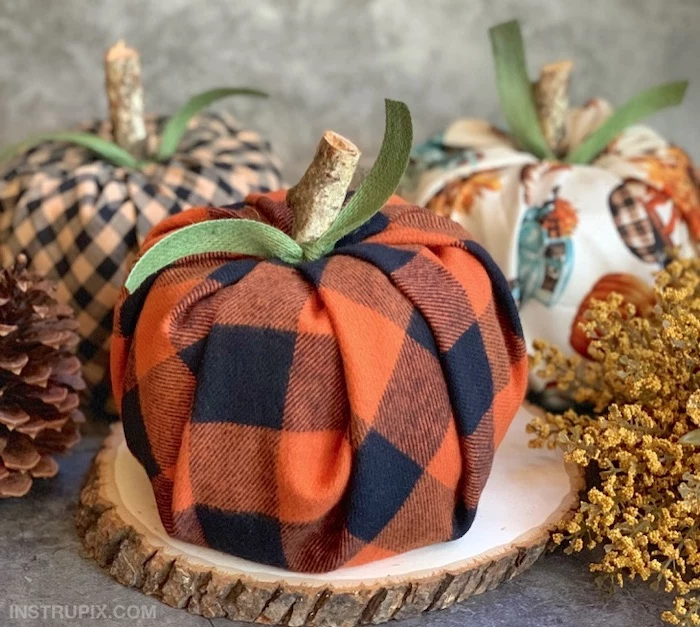
Building a Centerpiece That Lasts
Let’s elevate things beyond a simple foam pumpkin. A truly stunning centerpiece has good bones, or what we call ‘mechanics’ in the floral world. For a long table, I like to build the arrangement on a narrow wooden tray or even just a plank of decorative wood. This contains the whole design and protects your table.
For fresh arrangements, you’ll want some wet floral foam (the green stuff, often sold as Oasis). The trick is to let it soak properly: just float it in a tub of water and let it sink on its own. Don’t push it under! That can create dry pockets inside that will kill your flowers. For dried arrangements, use the stiff, gray or brown dry floral foam and a hot glue gun to secure lighter bits. For heavier things like mini gourds or pomegranates, I drill a small hole, stick in a wooden floral pick, and then I have a “stem” to push securely into the foam.
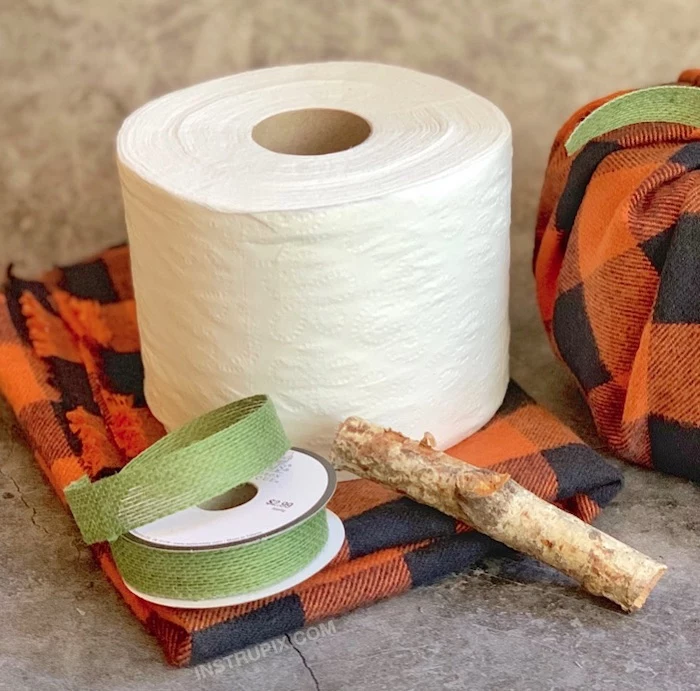
When I’m actually building the arrangement, I follow a classic design recipe: Thriller, Filler, and Spiller.
- Thrillers: These are your tall, dramatic showstoppers that create the main shape. Think tall pheasant feathers, cattails, or curly willow branches.
- Fillers: This is the body of the arrangement—the mid-sized flowers and foliage that fill it out. Mums, hydrangeas, and oak leaves are perfect here.
- Spillers: These are the elements that gracefully hang over the edge of the container, connecting the arrangement to the table. Trailing ivy, eucalyptus, or amaranthus are great choices.
What if You Can’t Forage?
Living in the city doesn’t mean you’re out of luck! Just “forage” at the grocery store. A bag of whole cranberries in a glass vase, a bundle of cinnamon sticks tied with twine, or a bowl of pears, pomegranates, or even artichokes can make incredible natural decor. And don’t forget the craft store; the dried flower section is a goldmine for things like wheat sheaves and preserved eucalyptus.
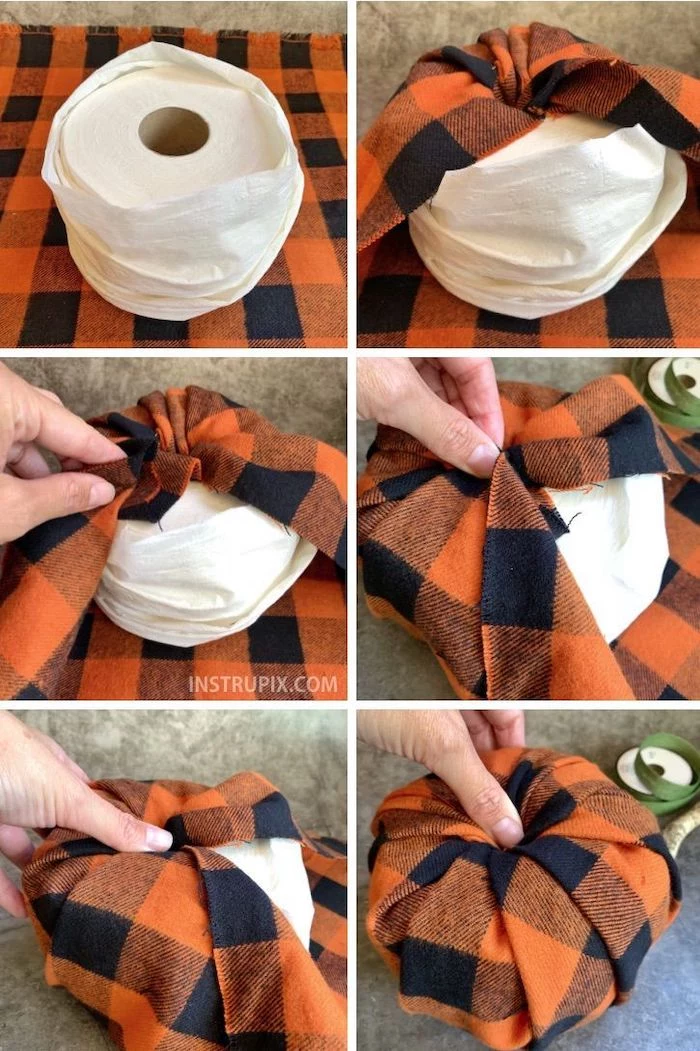
An Upgraded ‘Thankful Tree’
The thankful tree is a lovely idea, but a few twigs in a jar can look a little sad. To give it a professional polish, think bigger. I like to use a large manzanita branch—they have these beautiful, sculptural arms. You can often find them at floral supply shops or online on sites like Etsy, usually for between $20 and $50. If that’s not in the budget, a cluster of curly willow or even some nicely shaped bare branches from your yard can work just as well.
To make it stable, place the branch in a heavy ceramic urn and mix up a small batch of plaster of Paris. A small box is under $10 at any hardware store. Mix it to a thick pancake-batter consistency, pour it into the urn to anchor the branch, and be ready—it sets fast! This creates a solid base that won’t tip over, turning a simple craft into a meaningful piece of art for your entryway.
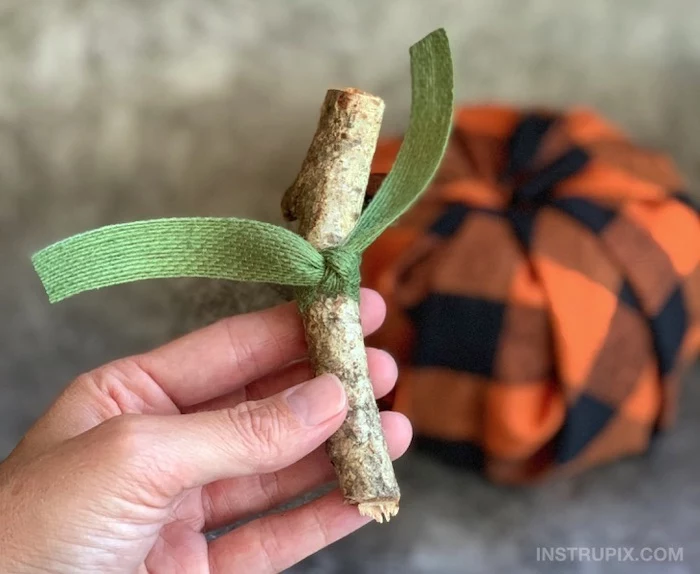
My 5-Minute Centerpiece for Panickers
Okay, what if it’s the day before Thanksgiving and you’ve done… nothing? Don’t panic. I have a go-to, super-fast centerpiece that always looks amazing.
Just grab a table runner and lay it down the center of your table. Find one single, interesting branch—something with a nice shape. Lay it down the middle of the runner. Then, just nestle a few mini pumpkins or gourds around it and tuck in a handful of battery-operated tea lights. Done. It’s elegant, simple, and takes less than five minutes.
A Practical Plan for a Stress-Free Holiday
A beautiful home shouldn’t cost you your sanity. The key is planning. I follow a simple timeline to make sure everything’s ready without that last-minute scramble.
- Two Weeks Before: This is your thinking and planning time. Settle on your color palette and general theme. Make a list of everything you need to buy or find. Order any specialty items now.
- One Week Before: Time to forage and prep. Take your nature walk, then treat your pine cones and branches. Start your glycerin leaf-soaking now if you’re doing it.
- The Monday or Tuesday Before: Time to build. Assemble your main arrangements, your mantel decor, and anything for the entryway. This gets the heavy lifting done before you’re busy with cooking.
- The Day Before: Buy your fresh flowers and add them to your arrangements. Do a final fluff and tweak of all your decor. Set the entire table—linens, plates, glassware, everything.
- Thanksgiving Morning: All that’s left are the final touches. Light the candles, fill the water glasses, and maybe place a single fresh herb on each plate. Your work is done!

Budgeting: Where to Splurge and Where to Save
You don’t need a huge budget. The trick is to spend your money where it has the most impact. I always advise people to focus their spending on two key areas: the entryway and the dining table. It’s where your guests spend the most time and where good design really shines.
Splurge on reusable items: A high-quality, realistic-looking faux wreath or a set of elegant candle holders are investments you’ll use for years. I also believe in splurging on good ribbon; it just makes everything look more luxe.
Save with natural items: Pumpkins, gourds, fresh flowers, and foraged branches are cheap but give you a lot of bang for your buck. Use grocery store flowers like mums, but arrange them with care. A simple bundle of wheat tied with a beautiful ribbon can be just as stunning as a pricey floral arrangement.
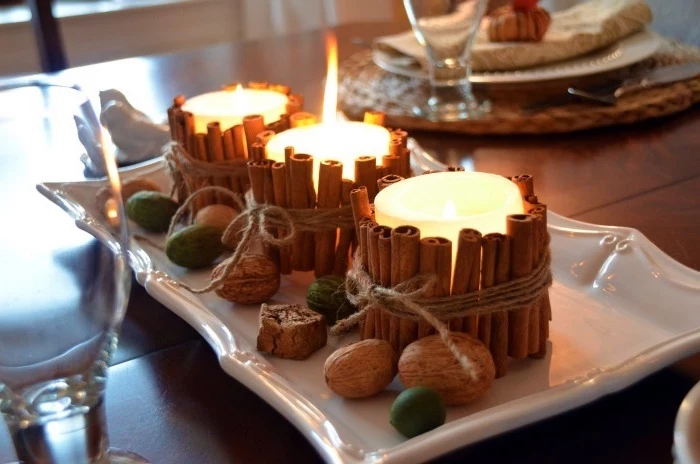
Safety First: A Pro’s Non-Negotiables
Creating a beautiful space is one thing, but making sure it’s a safe space is my top priority. I’ve seen enough close calls to be really strict about this stuff. These aren’t suggestions—they’re rules.
- The 12-Inch Rule: Keep all flammable materials—napkins, dried leaves, pine cones—at least 12 inches away from any open flame. No exceptions.
- Use Proper Holders: A candle must be in a stable, non-flammable holder. Pillar candles need to sit on a sturdy plate.
- Embrace Good LEDs: I used to be a candle snob, but battery-operated candle technology is amazing now. High-quality brands like Luminara make them out of real wax and have an incredibly realistic flicker. They’re an investment, but I use them almost exclusively in garlands and wreaths now. All the ambiance, zero fire hazard.
- Never Leave Flames Unattended: The most obvious rule, and the one that gets broken most often. If you leave the room, blow out the candles.
And finally, be smart about what you bring inside. If you’re foraging and can’t identify a plant or berry with 100% certainty, just leave it. Many common plants are toxic to pets or kids. When in doubt, leave it out. When you’re hanging heavy garlands, use proper hooks rated for the weight, not flimsy adhesive ones.
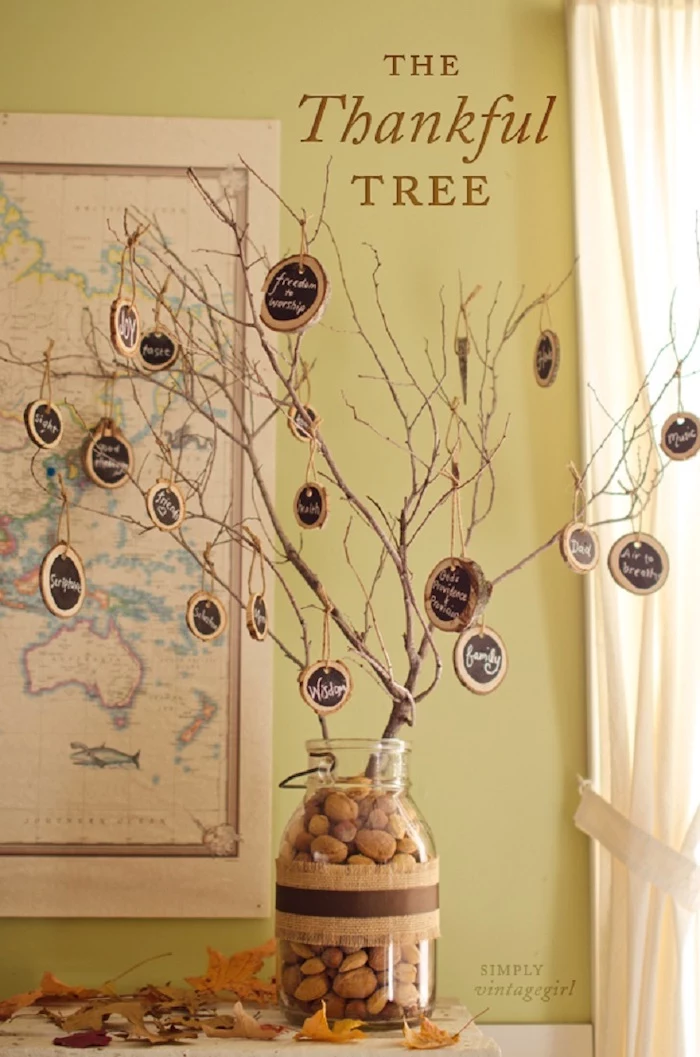
At the end of the day, decorating for Thanksgiving is really an act of love. It’s all about creating a warm, safe, and beautiful place for the people you care about to gather and feel good. By mixing a few design basics with some practical know-how, you can set a scene that truly adds to the spirit of the day.
Inspiration Gallery
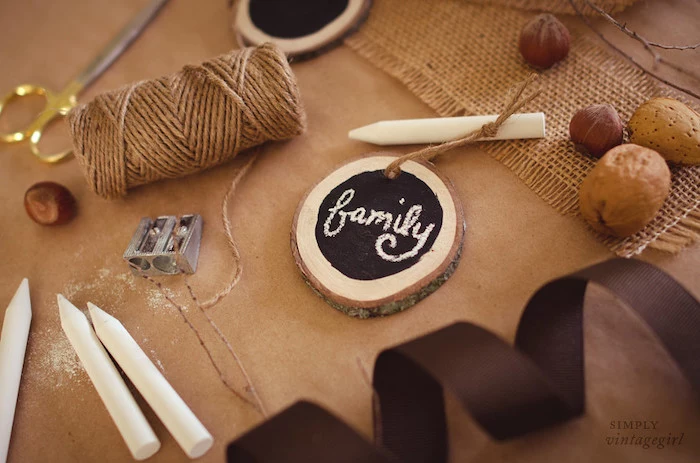
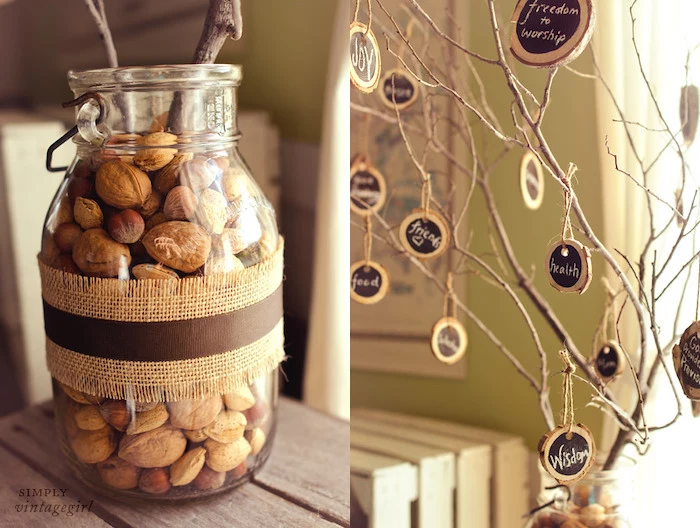
The Unsung Hero: Texture. While color gets all the attention, texture is what makes a space feel rich and inviting. Think beyond the visual. Combine the smooth, cool surface of a ceramic pumpkin with the rough, organic feel of a burlap runner. Add the soft plushness of velvet ribbon to a bundle of dried wheat stalks. It’s this contrast that creates depth and begs to be touched.

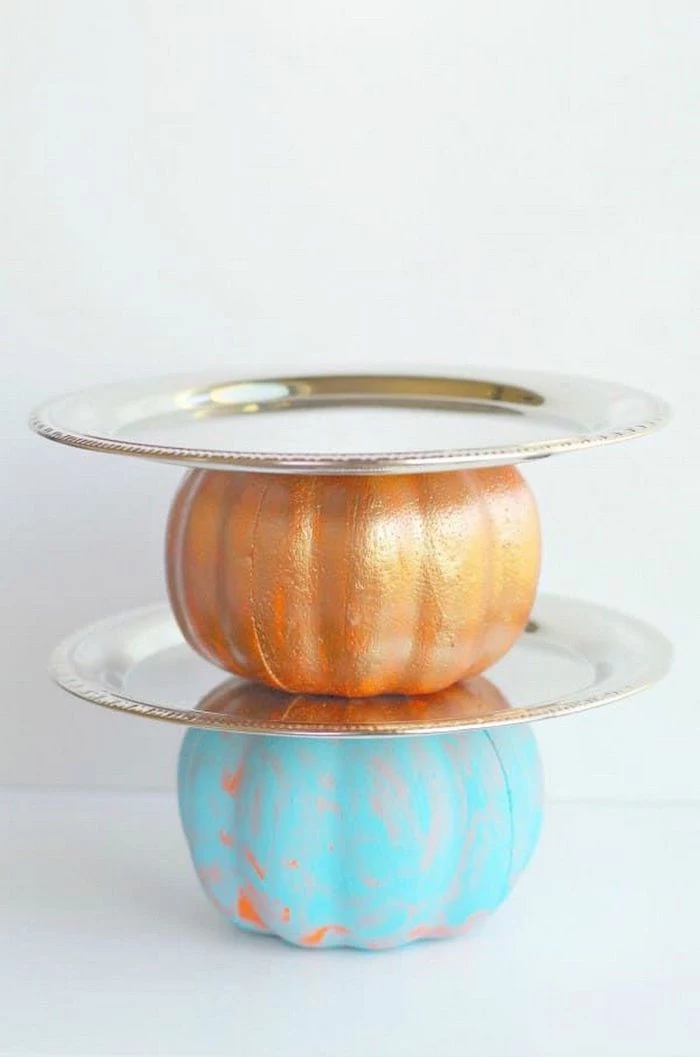
- Start with a base of unscented beeswax or soy tapers for a clean, classic look.
- Introduce a single, high-quality scented candle away from the dining table, perhaps on a console or mantel.
- Simmer a pot of water on the stove with cinnamon sticks, orange peel, and cloves for a natural, food-friendly aroma.
The secret? Layering scent just like you layer visuals, ensuring the dining area remains free of aromas that compete with the feast.
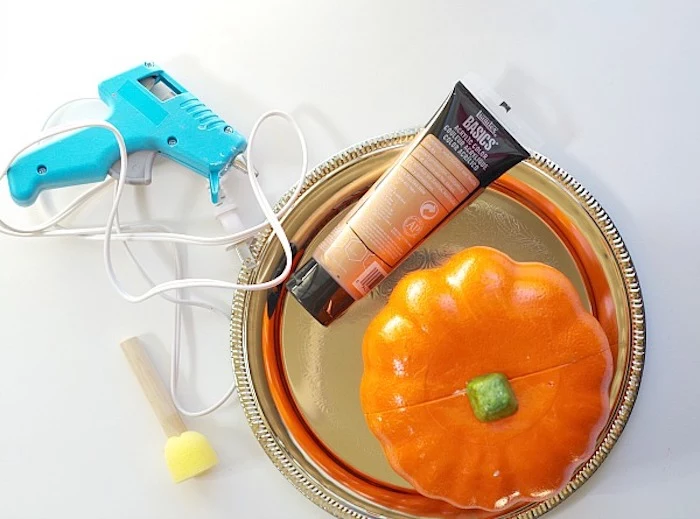
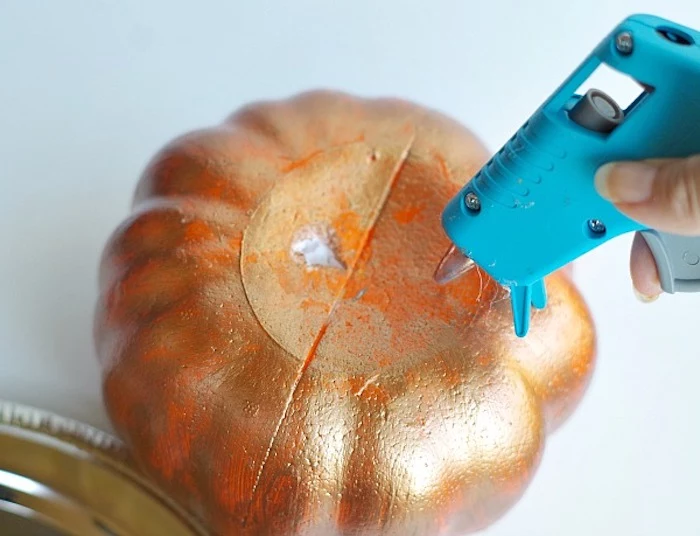
How do I make my centerpiece impressive but still allow for conversation?
The key is varying height, but keeping the main elements low. Use a long, low vessel or a series of small bud vases snaking down the table. Anchor it with low-profile gourds like the ‘Lunch Lady’ or ‘Fairytale’ varieties. Then, add delicate height with wispy elements like dried grasses, eucalyptus stems, or pheasant feathers that guests can easily see through and around.

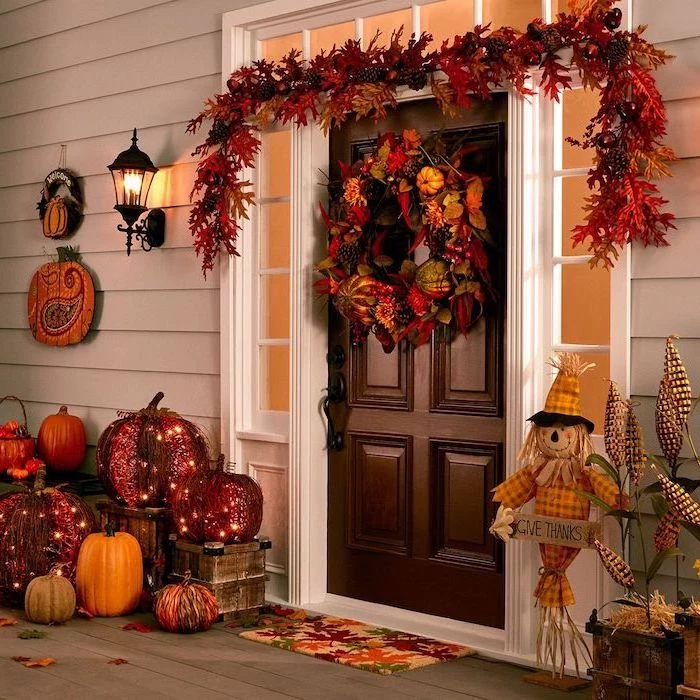
More than 750 varieties of pumpkins and squash are grown in the United States.
Move beyond the classic orange pumpkin! Explore the muted greens of ‘Jarrahdale’, the ghostly white of ‘Lumina’, or the warty, fascinating texture of ‘Knucklehead’ pumpkins. Grouping these unique varieties creates an instant, sophisticated display with minimal effort.
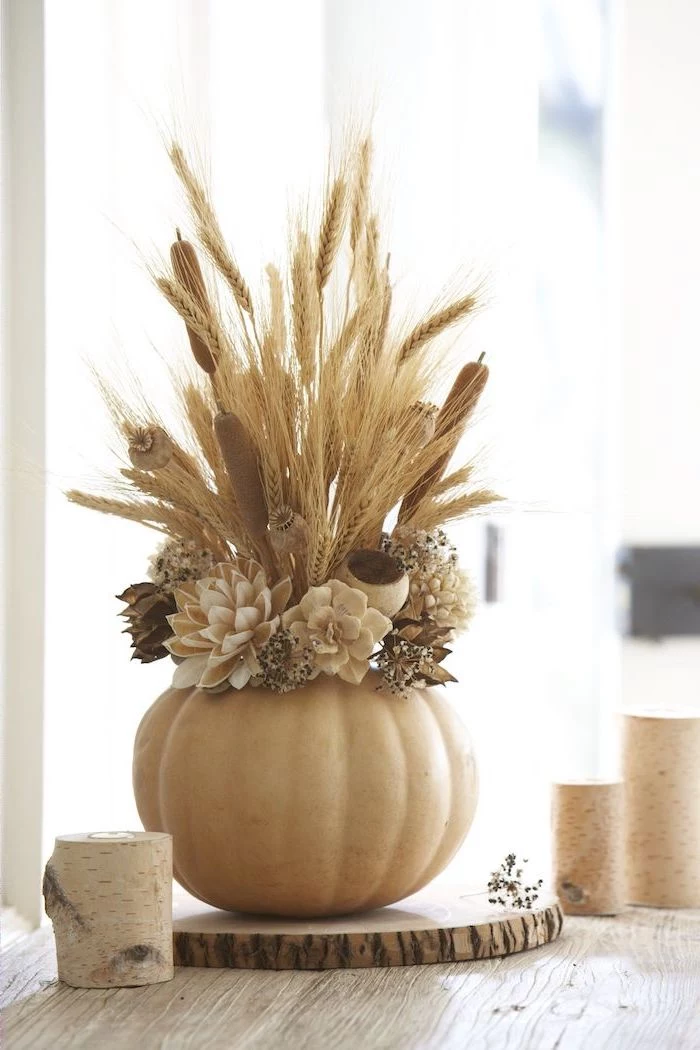
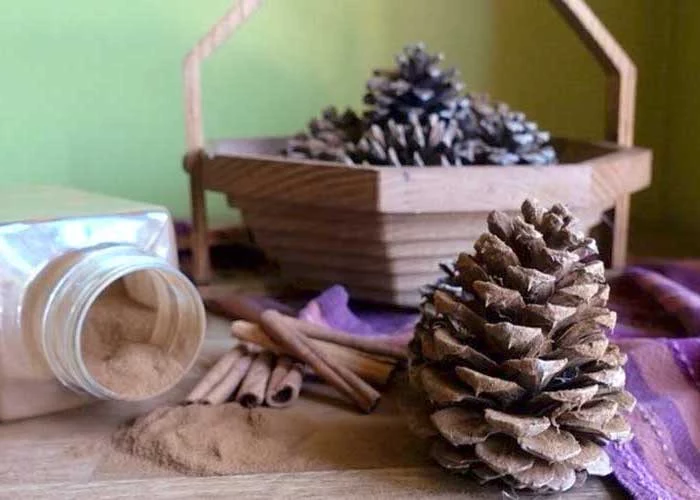
Foraged Finds: Bring the outdoors in by gathering materials from your own backyard or a local park (where permitted). Look for fallen branches with interesting shapes, acorns, unique seed pods, and colorful fallen leaves.
Grocery Store Chic: The produce aisle is a goldmine. Artichokes, pomegranates, pears, and heads of kale or cabbage can be stunning temporary additions to a centerpiece, adding an element of life and bounty.
Both options offer an authentic, seasonal touch that is often more beautiful than store-bought replicas.
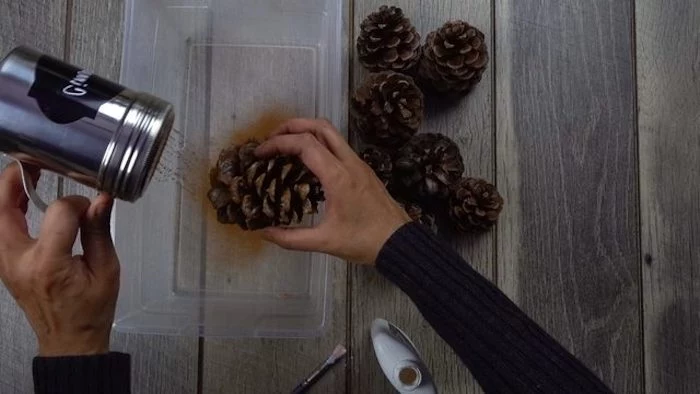
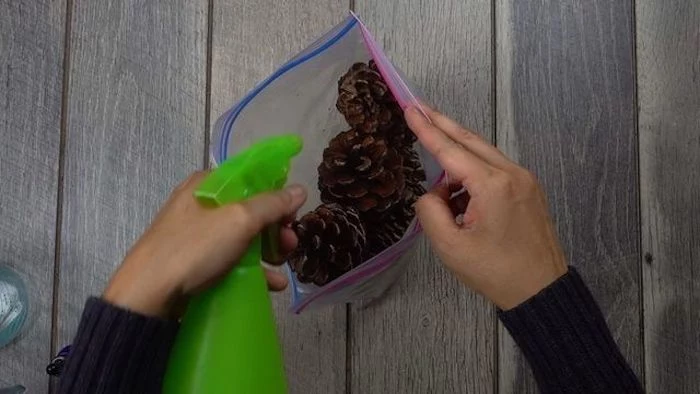
Give your faux pumpkins an upgrade. A coat of matte chalk paint, like Annie Sloan’s in ‘French Linen’ or ‘Graphite’, can instantly make plastic pumpkins look like high-end ceramic or stone pieces. Finish with a light dusting of dirt or a wash of dark wax in the crevices for a truly authentic, aged appearance.
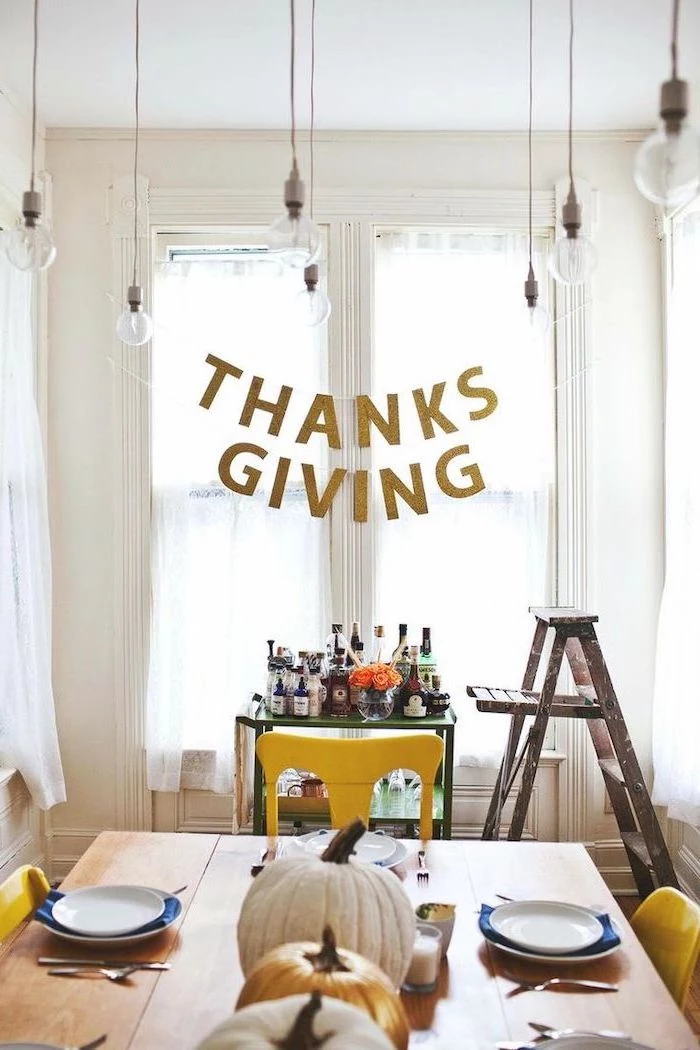
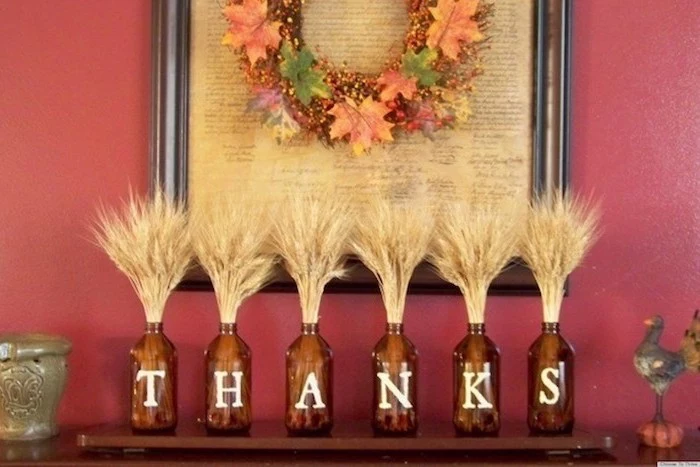
A single, powerful statement: Don’t underestimate the power of one large, dramatic arrangement. Instead of scattering many small items, consider a single oversized vase filled with fall branches like bittersweet or curly willow on a sideboard. It creates a strong focal point and feels intentional and uncluttered.
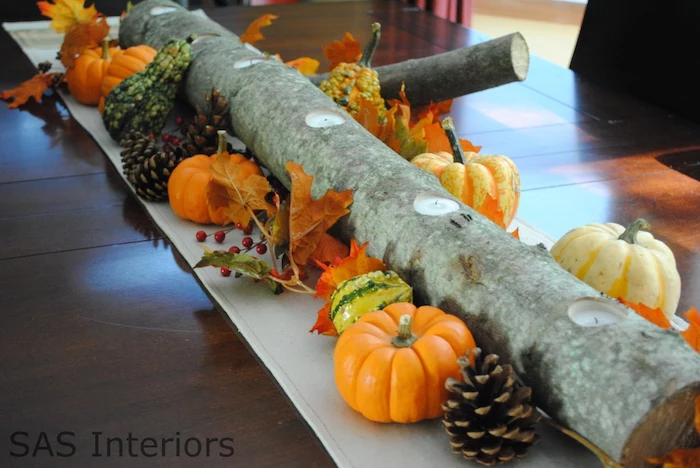
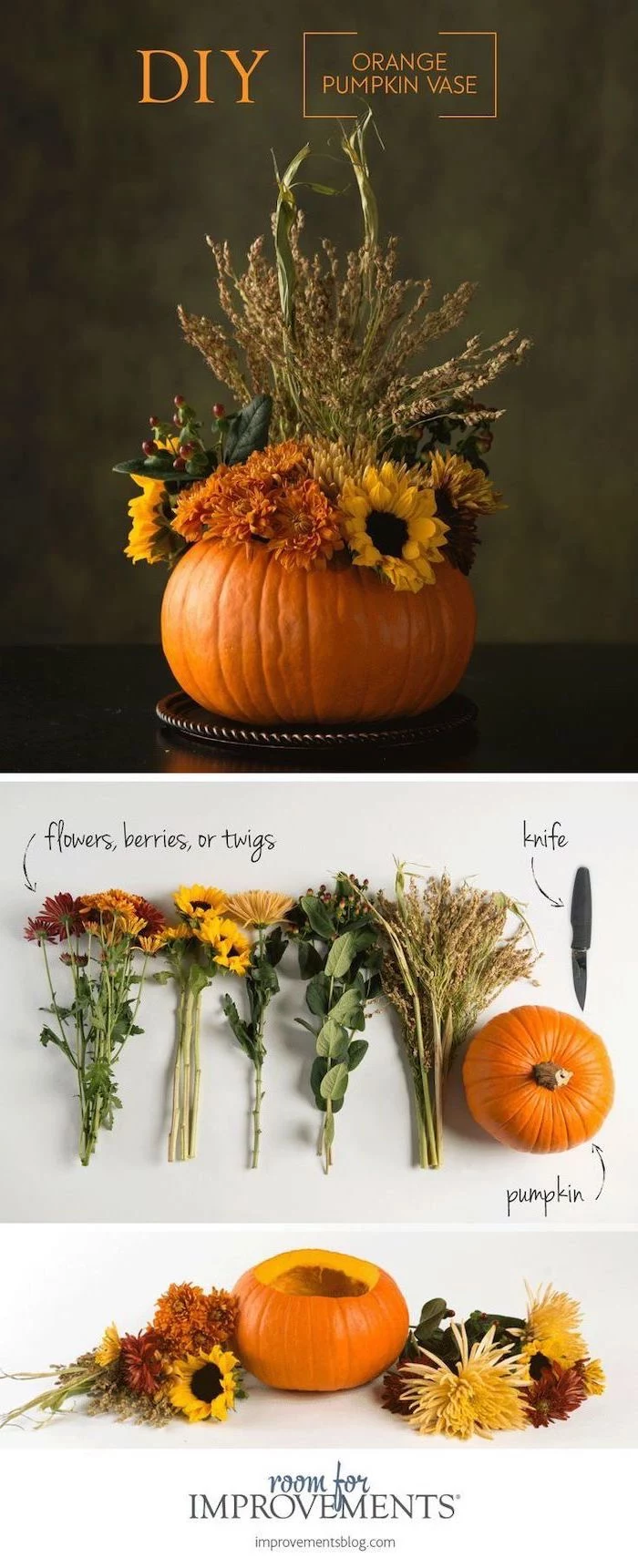
- They don’t wilt or spoil, allowing you to decorate weeks in advance.
- You can reuse them year after year, making them a sustainable investment.
- They can be painted, carved, or embellished in ways natural gourds cannot.
The secret? Look for high-quality foam or resin pumpkins from brands like Terrain or Pottery Barn, which often have realistic stems and hand-painted finishes that make them nearly indistinguishable from the real thing.
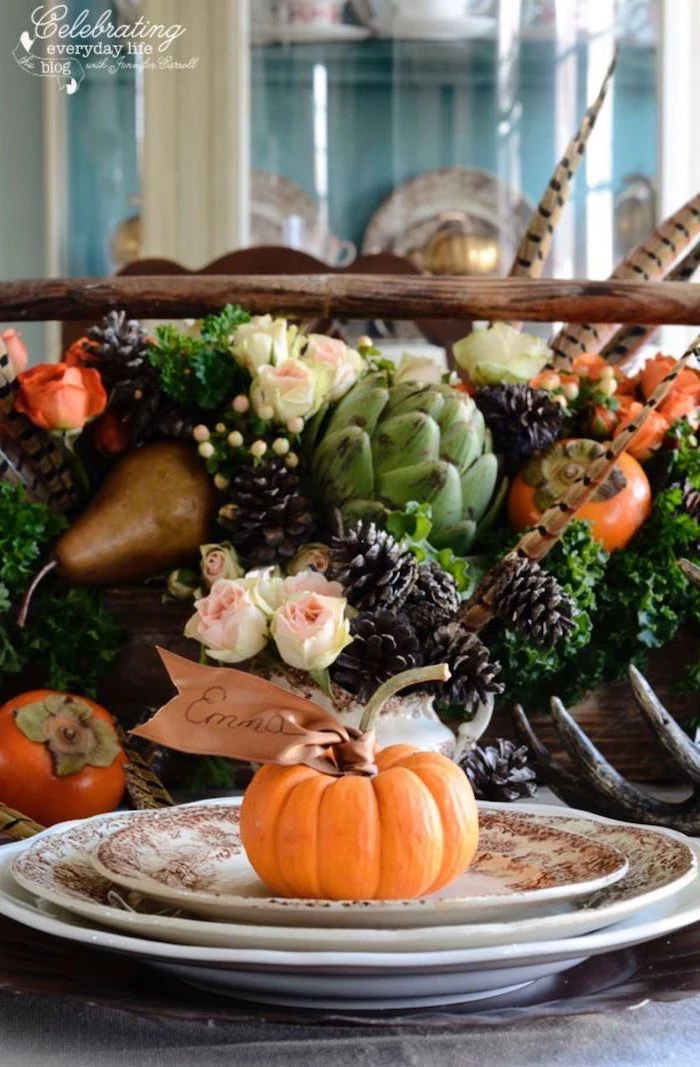
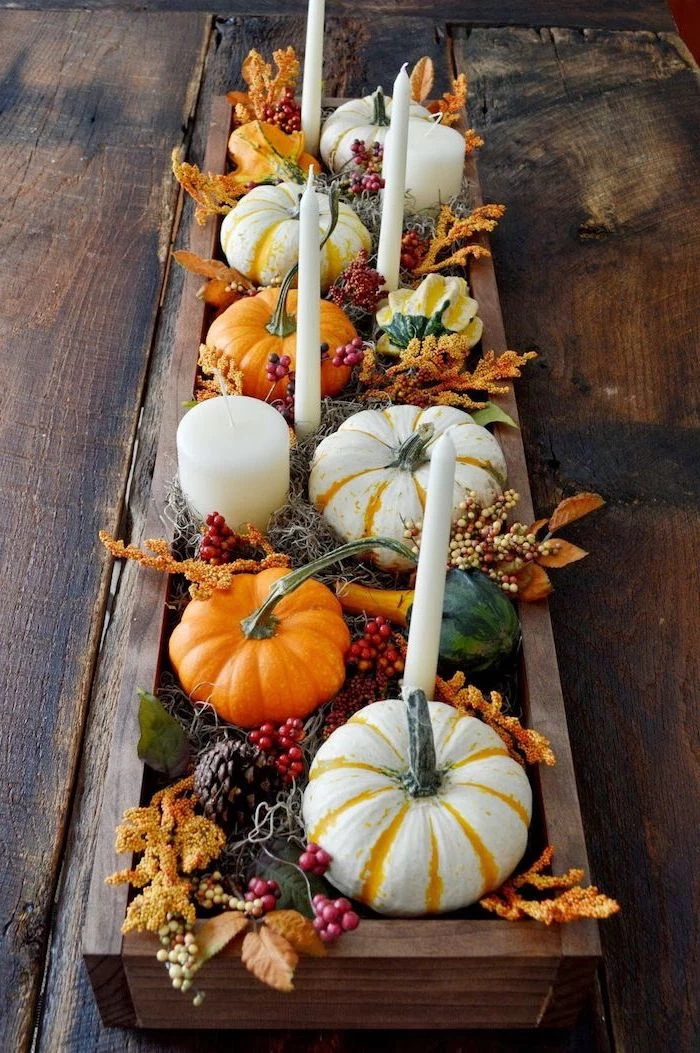
To create that warm, inviting glow essential for a Thanksgiving atmosphere, check the color temperature of your light bulbs. Opt for bulbs in the 2200K to 2700K (Kelvin) range. This ‘warm white’ light mimics candlelight and firelight, making colors richer and skin tones more flattering. Avoid ‘cool white’ or ‘daylight’ bulbs (4000K+), which can feel sterile and harsh.
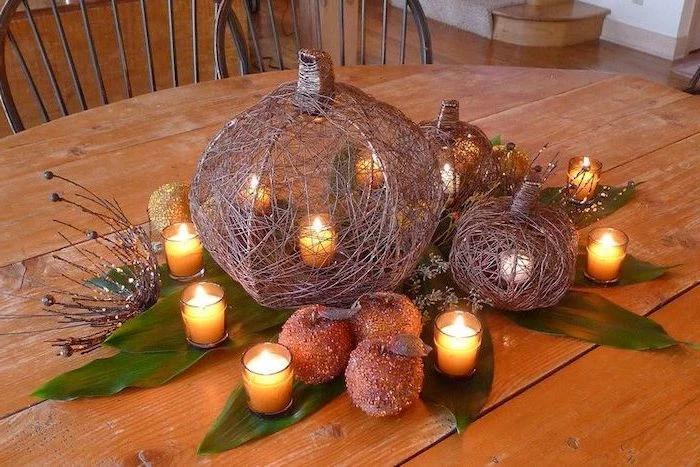
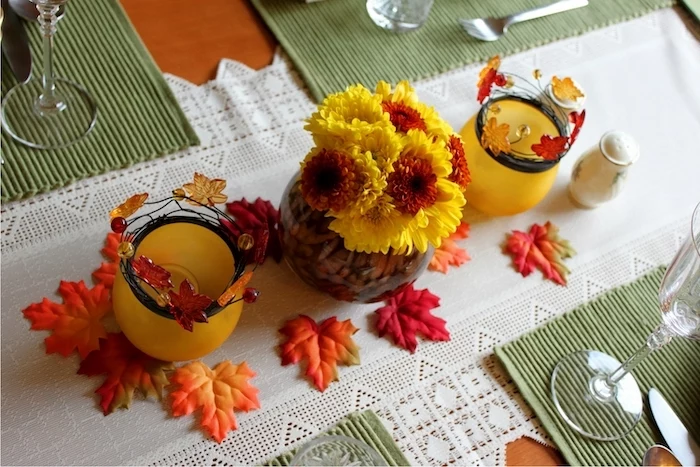
Can I mix gold, silver, and copper?
Absolutely! The key to mixing metals is to choose one dominant finish and use the others as accents. For example, use brushed gold cutlery as your primary metal, then weave in a few copper mugs for warmth and silver candlesticks for a touch of classic elegance. Spreading the accents across the space—not just on the table—helps the mix feel deliberate and cohesive.
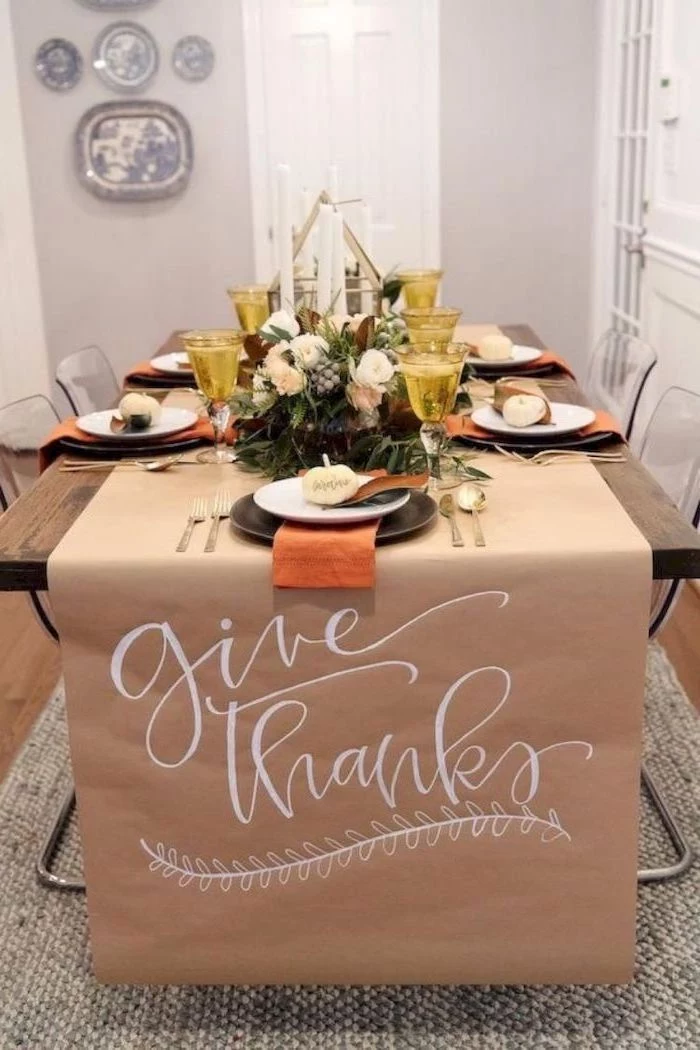
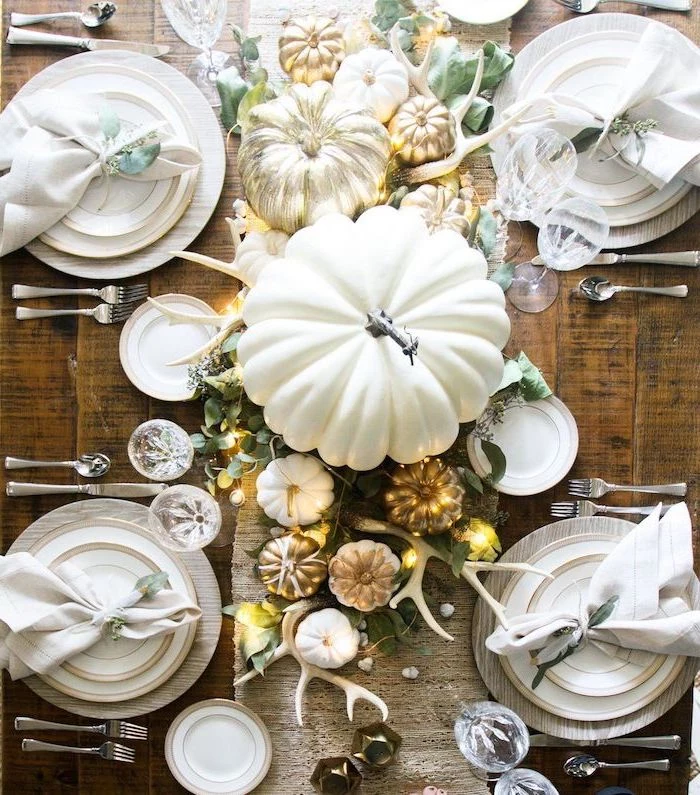
Go beyond the traditional table runner with these layering ideas:
- Linen on Linen: Place a narrow, richly colored runner over a wider, neutral tablecloth for a pop of color and texture.
- Burlap and Lace: For a rustic-chic look, layer a delicate lace runner (perhaps a family heirloom) over a simple, raw-edged burlap runner.
- Asymmetrical Drape: Use an oversized, lightweight throw blanket, like a plaid merino wool piece from Pendleton, and drape it diagonally across one corner of the table for a cozy, effortless feel.
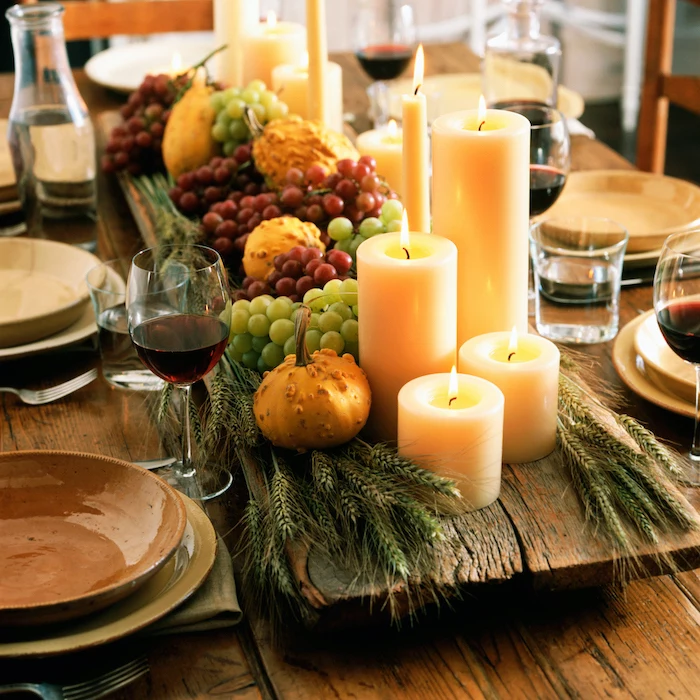
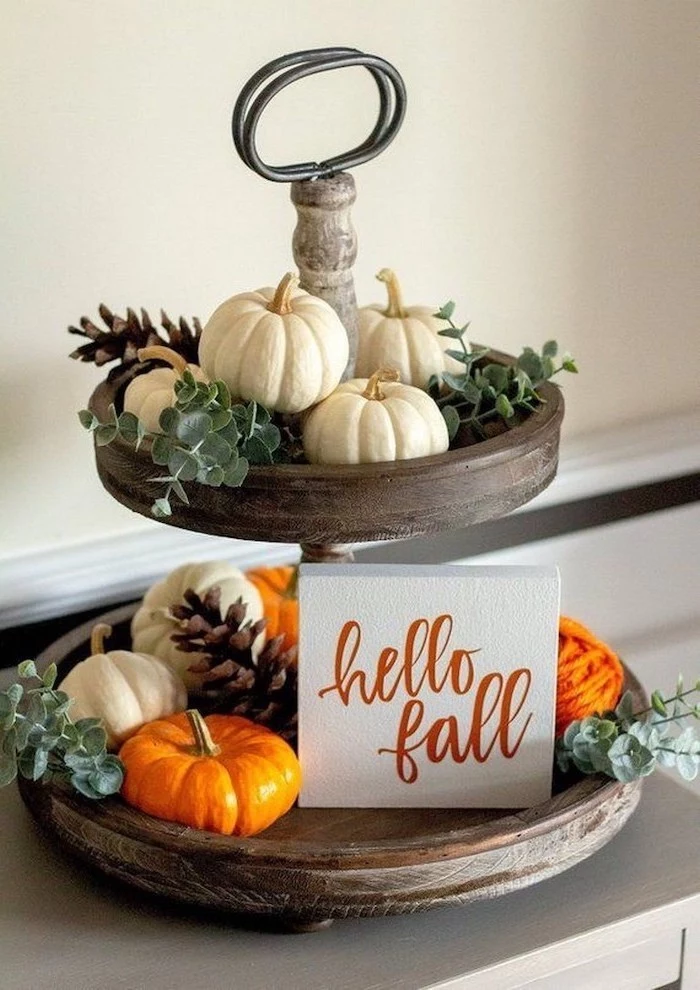
Don’t forget the scent-scape. While a scented candle is lovely, it can interfere with the aromas of the food. Instead, try an essential oil diffuser in an adjacent room with a blend of orange, clove, and frankincense. Or, for a zero-tech option, tie bundles of cinnamon sticks and rosemary to your napkins with a piece of twine for a subtle, natural fragrance that complements the meal.
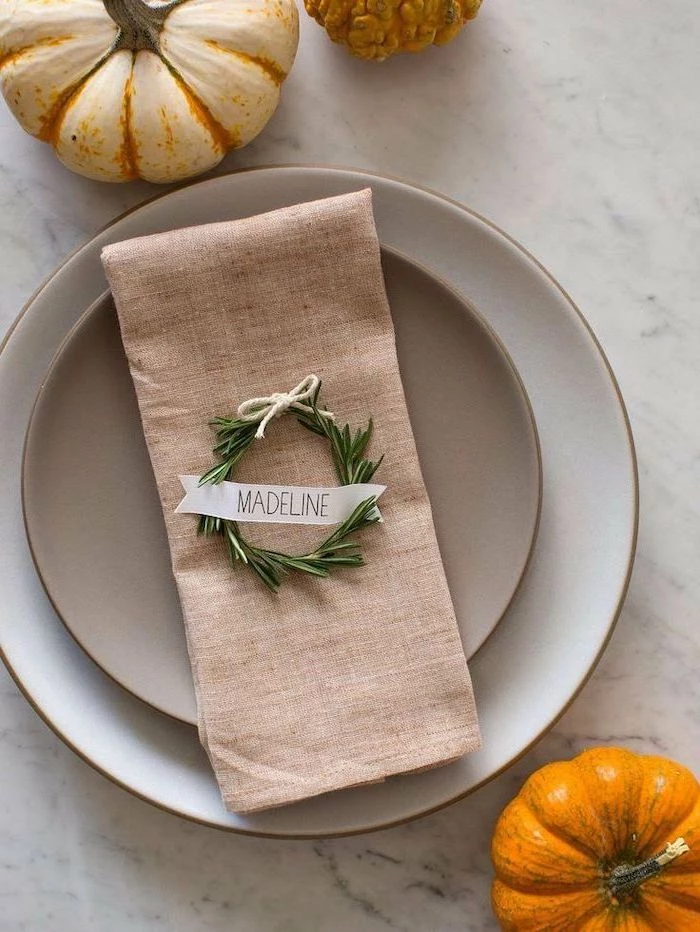
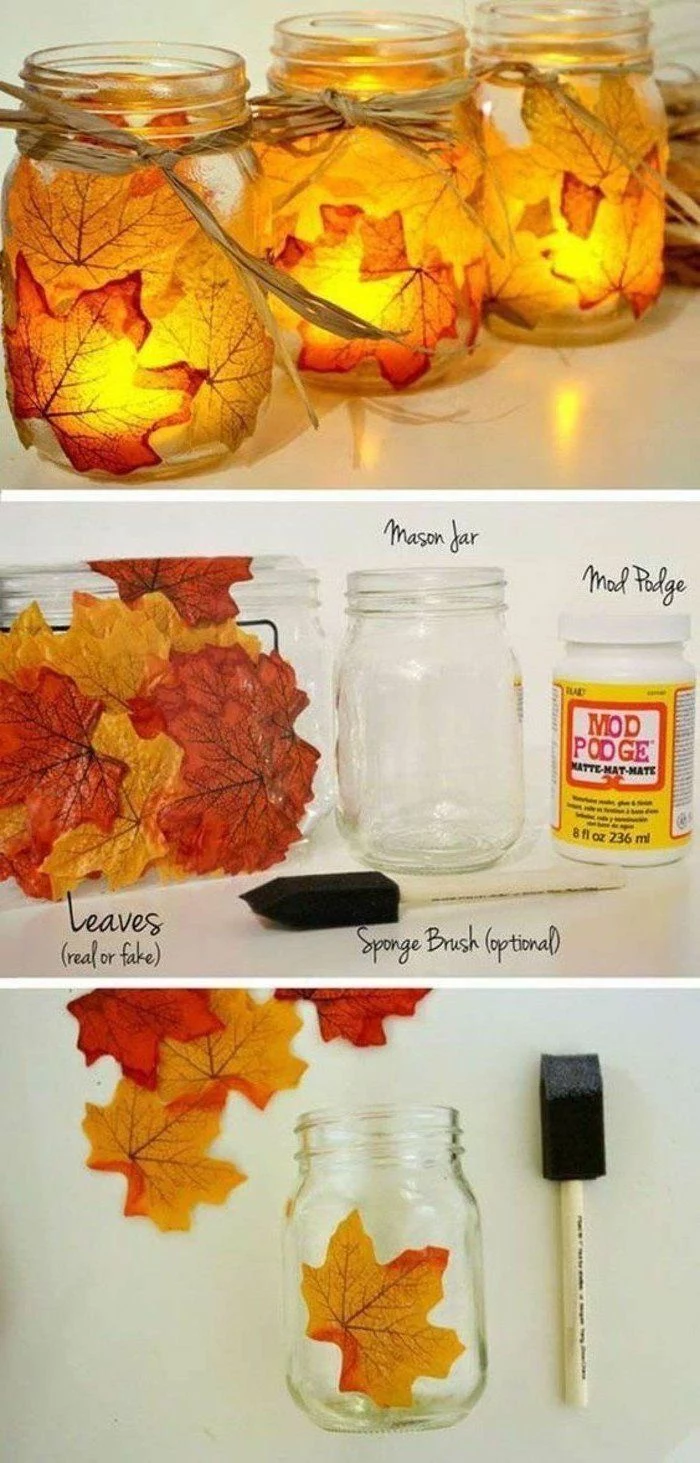
Fact: The tradition of using a cornucopia, or ‘horn of plenty,’ dates back to Ancient Greece and is a symbol of abundance, nourishment, and a bountiful harvest.
Instead of the standard wicker horn, try a modern interpretation. A large, beautiful wooden bowl, a rustic dough bowl, or even a woven basket can be filled to overflowing with gourds, apples, and nuts to evoke the same feeling of abundance in a more contemporary style.
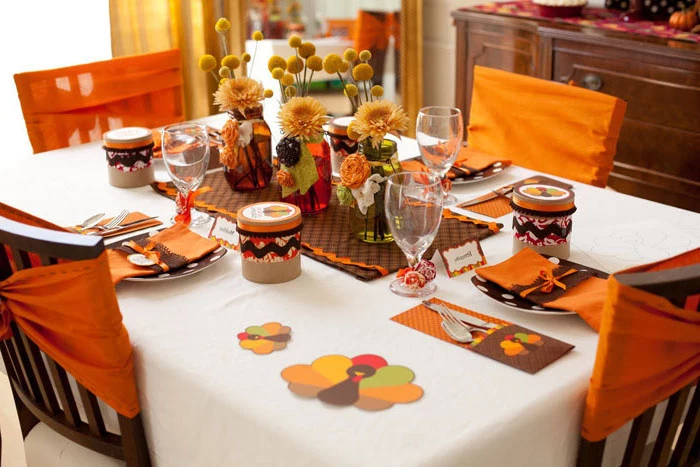
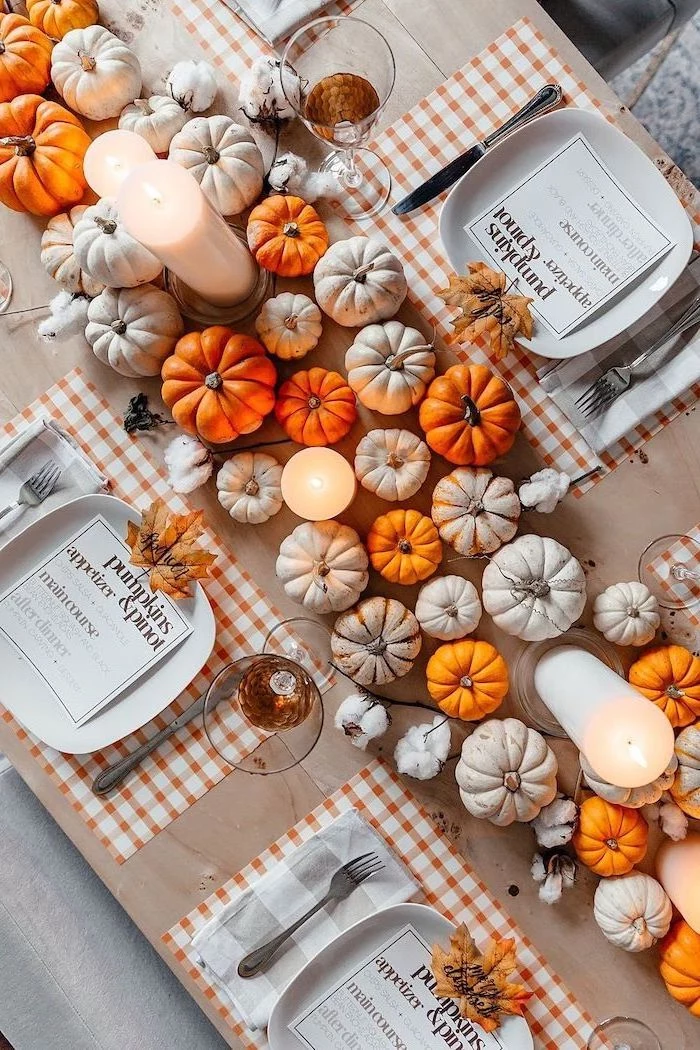
- Preserve the vibrant color of fall leaves by ironing them between two sheets of wax paper.
- Coat small branches or pinecones with a thin layer of Mod Podge in a matte finish to prevent them from crumbling.
- Let mini pumpkins and gourds ‘cure’ in a dry, sunny spot for a week before decorating to help them last for months.
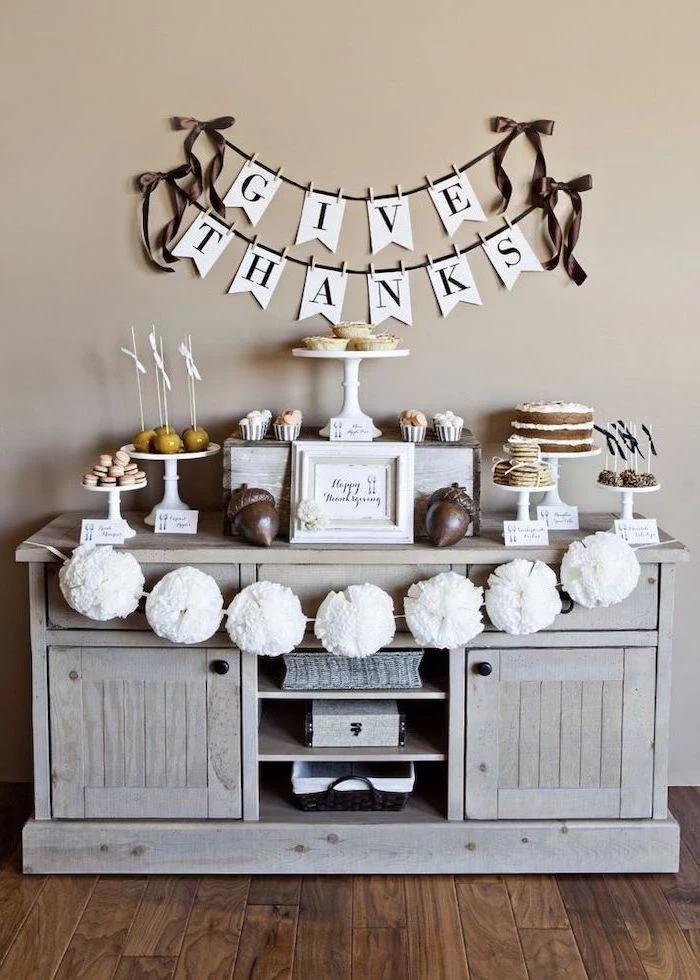
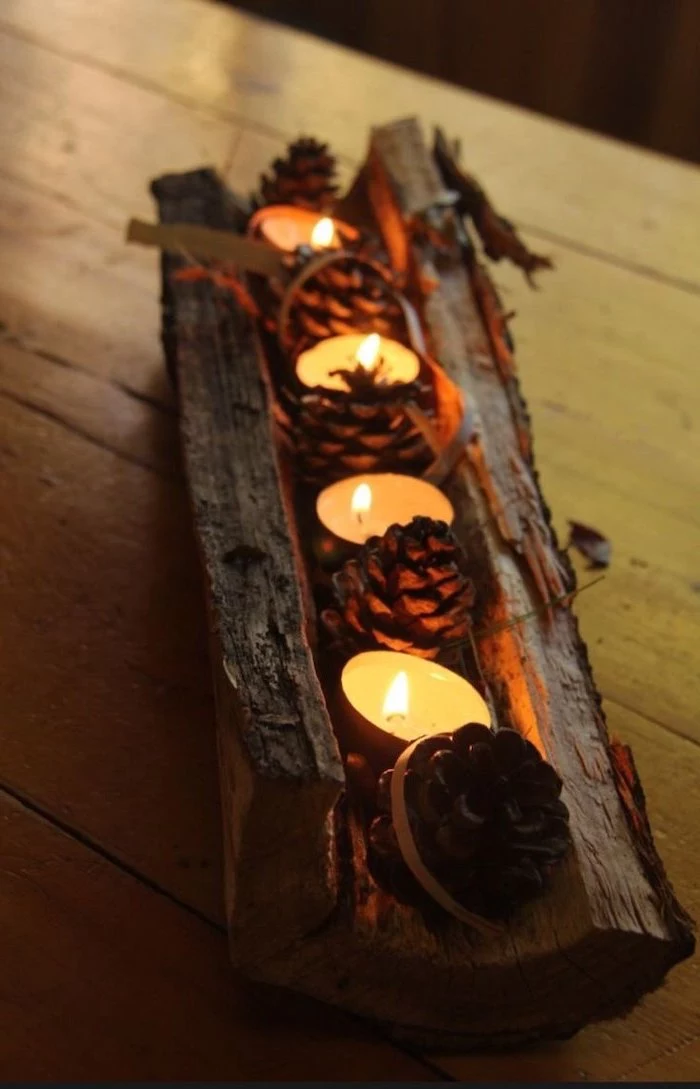
A common mistake: Creating a centerpiece that’s too tall. Your beautiful arrangement shouldn’t create a wall between your guests. As a rule of thumb, any centerpiece elements in the center of the table should be under 12 inches high to allow for easy conversation across the table.

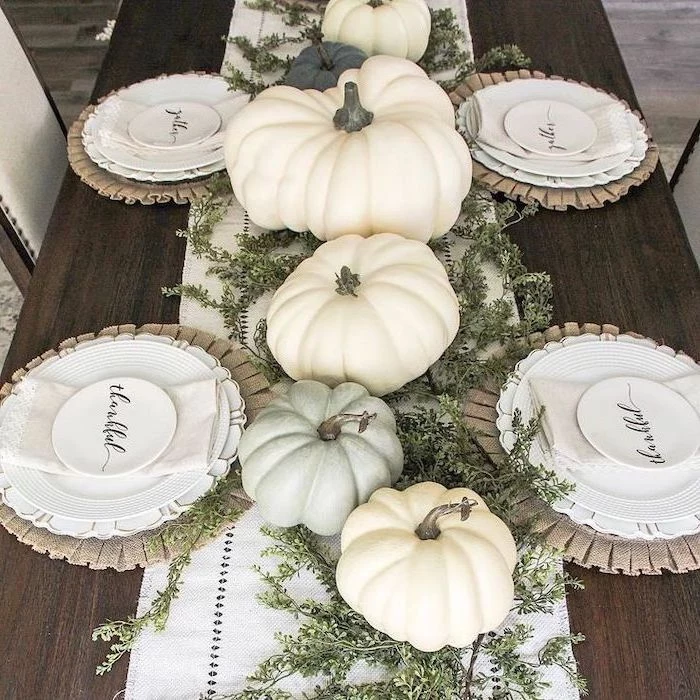
Candle Safety: For a worry-free glow, especially with children or pets around, consider high-quality flameless candles. Brands like Luminara use electromagnetic technology to create a remarkably realistic flickering effect. Place them inside lanterns or tall hurricanes to enhance their authenticity.
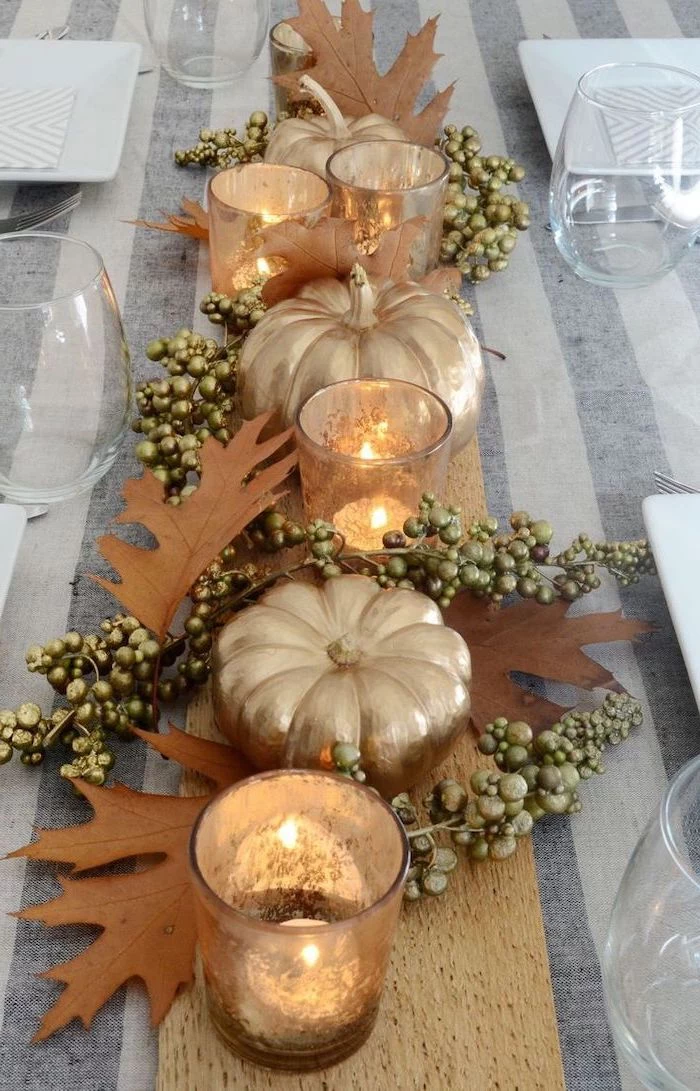
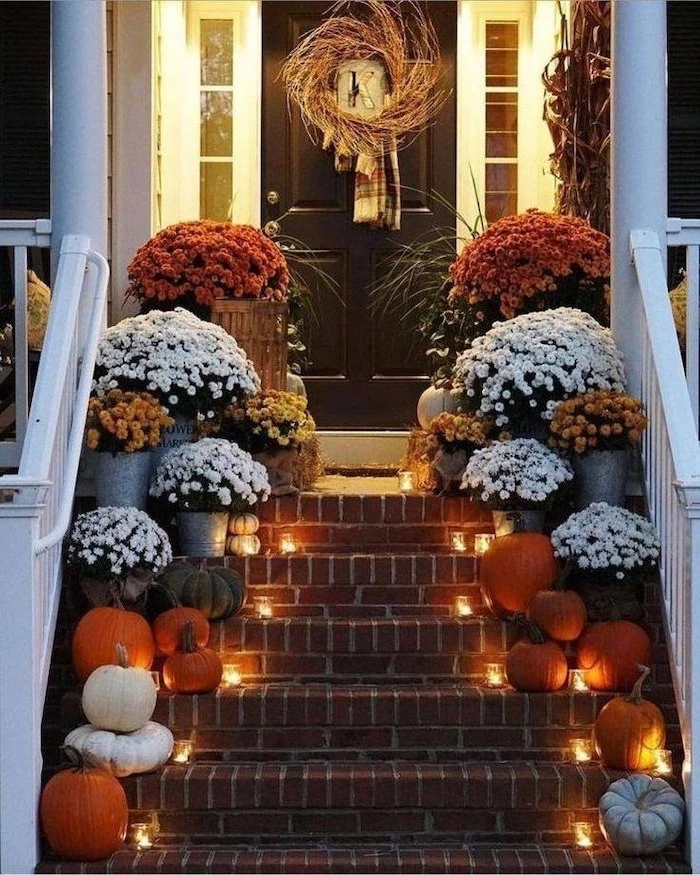
Embrace the moody side of autumn. A palette of deep plums, slate grey, and dark teal, accented with brass or copper, can be incredibly chic and dramatic. Pair dark linens with blackberries and deep red pomegranates on the table. This less-expected color scheme feels sophisticated and modern.
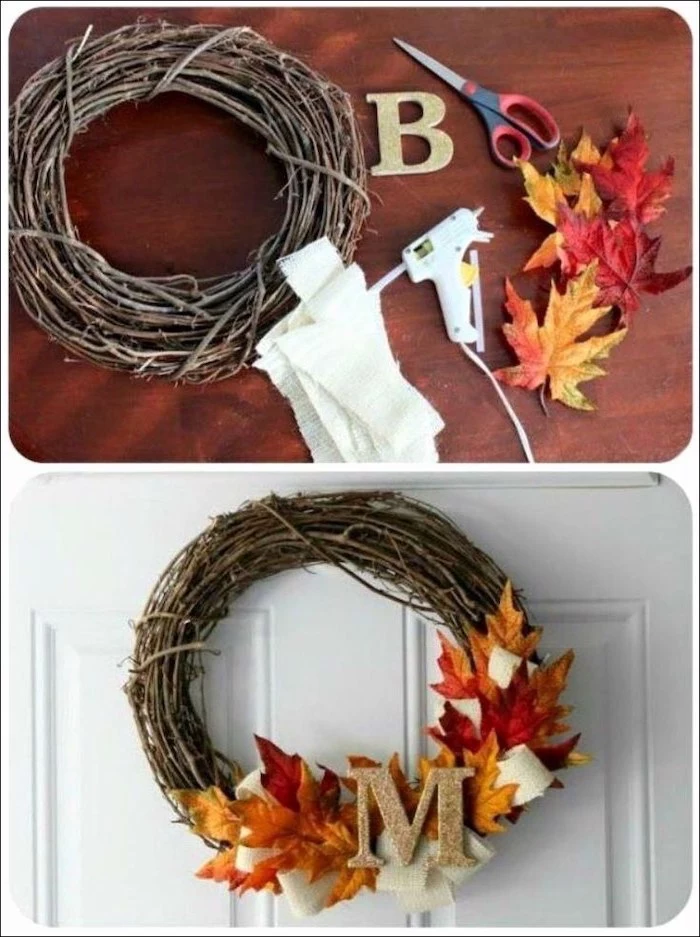
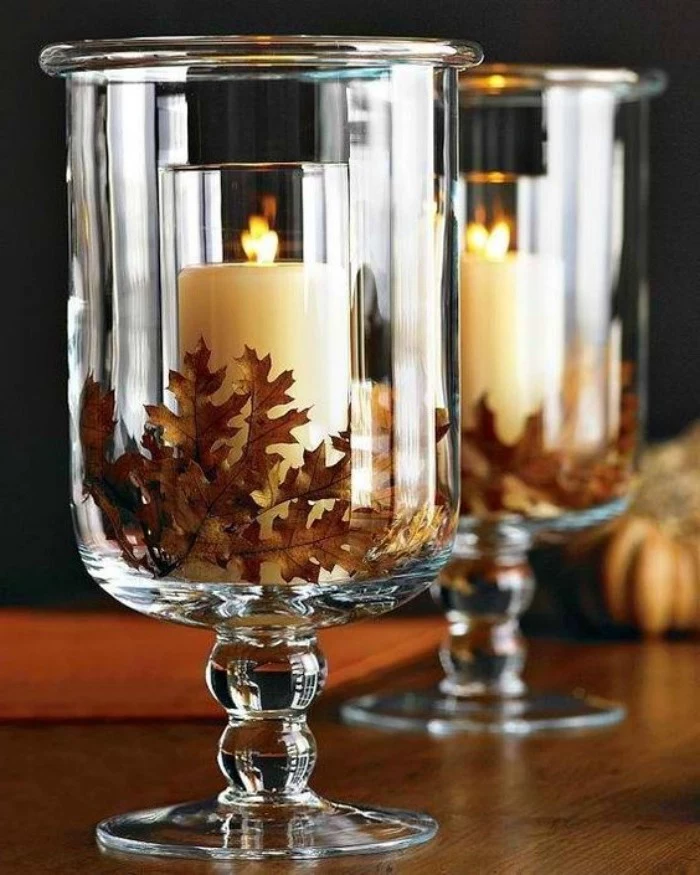
- A simple, elegant welcome for your guests sets the tone immediately.
- It extends the festive feeling throughout the home, not just in the dining room.
- It’s a great place to use larger-scale items that would overwhelm a table.
The secret? Layer your front porch or entryway with a durable outdoor rug, a cluster of pumpkins of varying sizes, a tall lantern, and a beautiful, full wreath on the door.
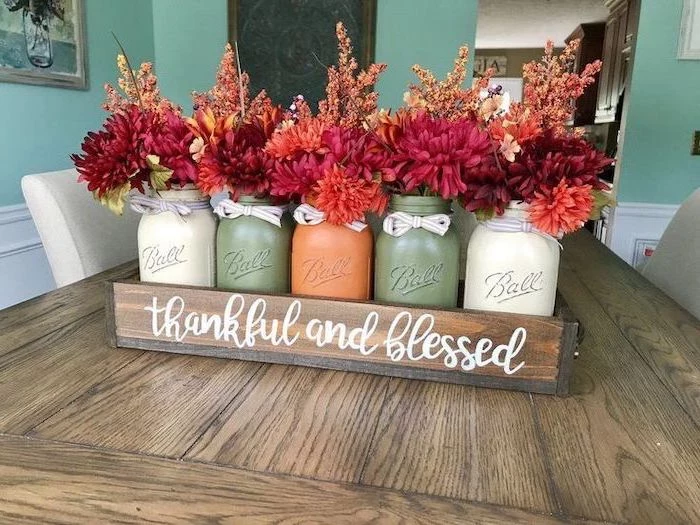
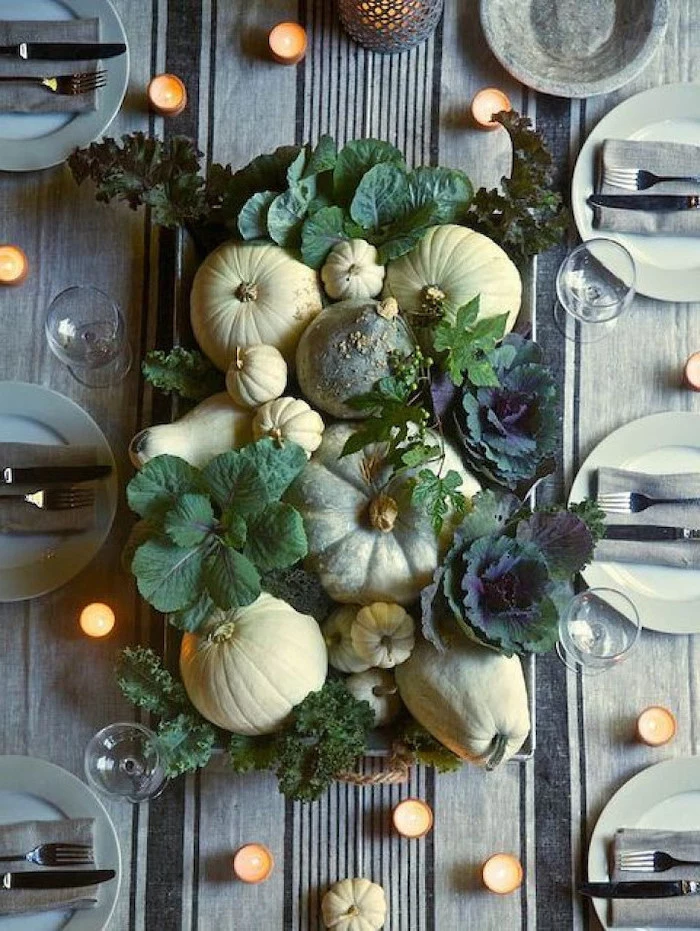
Create meaningful place cards by hand-writing each guest’s name on an unusual surface. Use a metallic gold Sharpie on a large, flat magnolia leaf. Write on a smooth, dark river stone with a white paint pen. Or simply tie a name tag with beautiful ribbon to the stem of a small pear or apple at each setting.
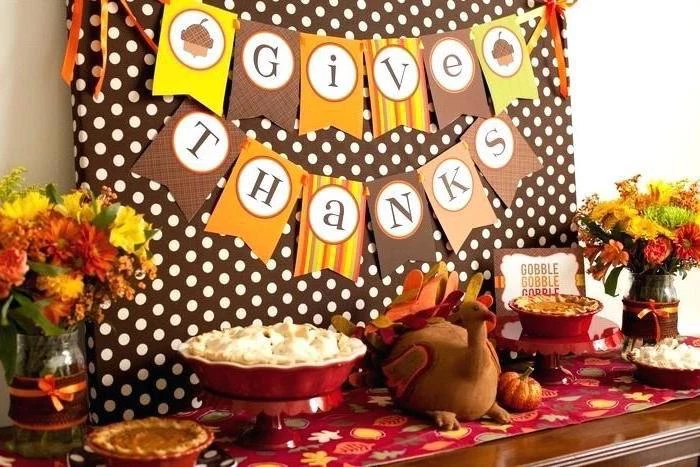

What’s the best paint for a no-fuss pumpkin project?
For a quick, even finish, nothing beats a quality spray paint. Krylon’s ‘Fusion All-In-One’ or Rust-Oleum’s ‘2X Ultra Cover’ series adhere well to pumpkin skin without needing a primer. For a more artistic, brushed look, acrylic craft paints work beautifully but may require two coats for full coverage.
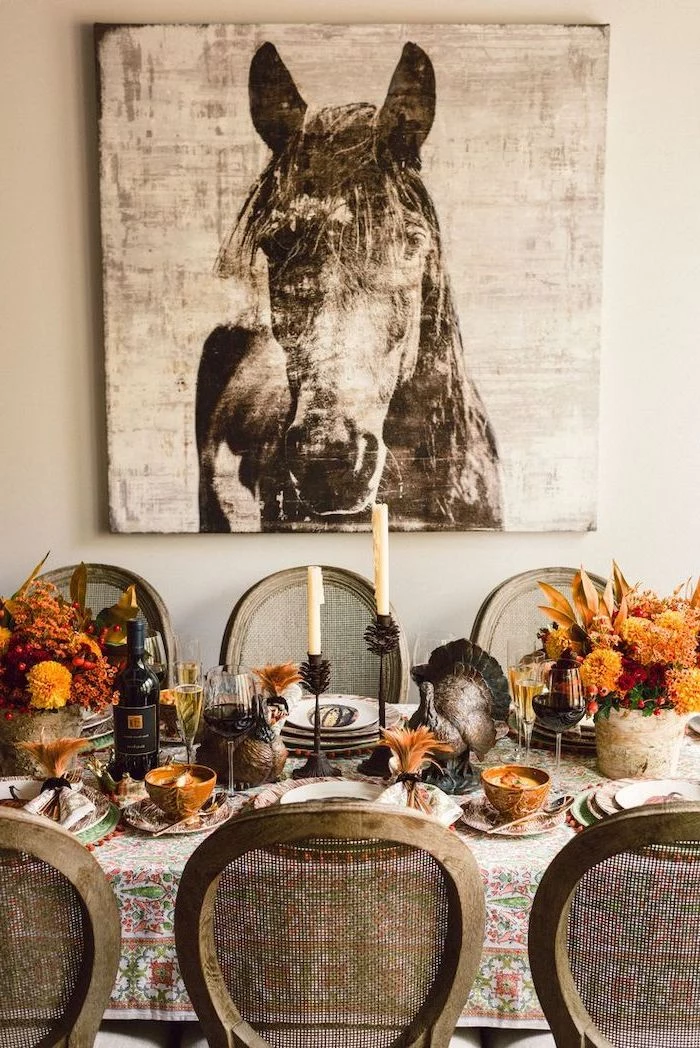
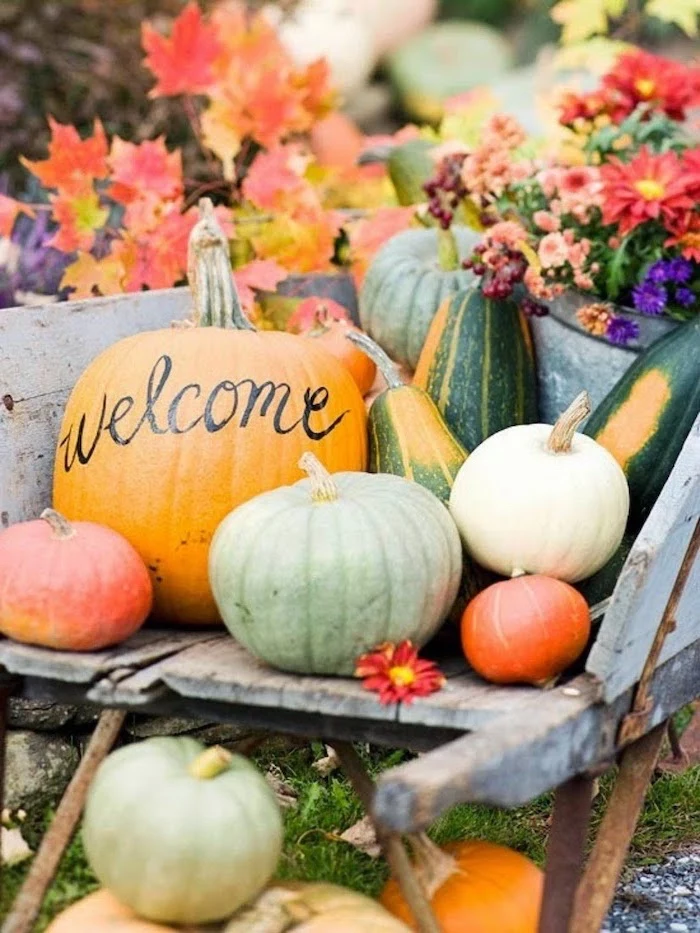
Belgian Linen: Known for its exceptional softness, durability, and a naturally rumpled, luxurious texture. It’s an investment piece that gets better with every wash.
Cotton or Cotton-Blend: More affordable and often available in a wider range of colors and patterns. It provides a crisper, more formal look and is typically easier to iron.
For the authentic, layered style, the imperfect elegance of Belgian linen is hard to beat.

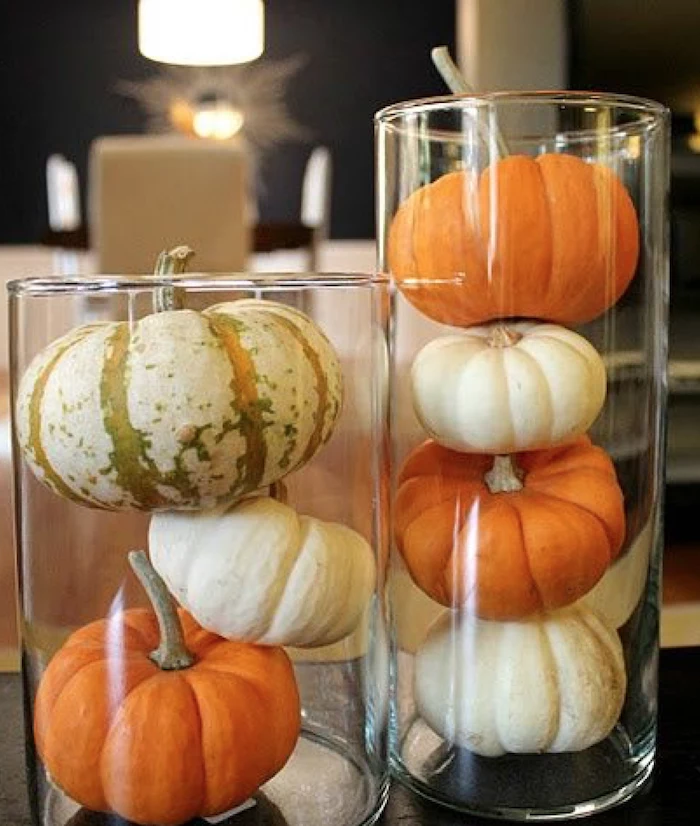
Extend the life of your decor by choosing items that transition to the winter holidays. Simple greenery, pinecones, birch logs, and metallic elements can remain after Thanksgiving. Simply swap out the pumpkins for mercury glass ornaments, add some red berries, and your decor is ready for the next celebration.
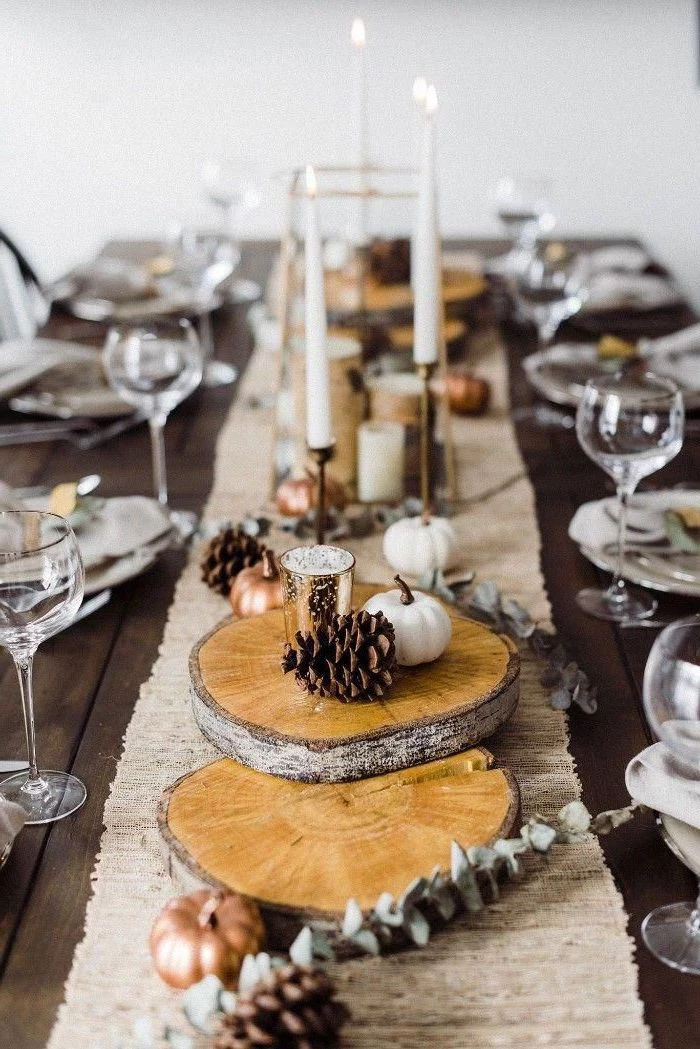
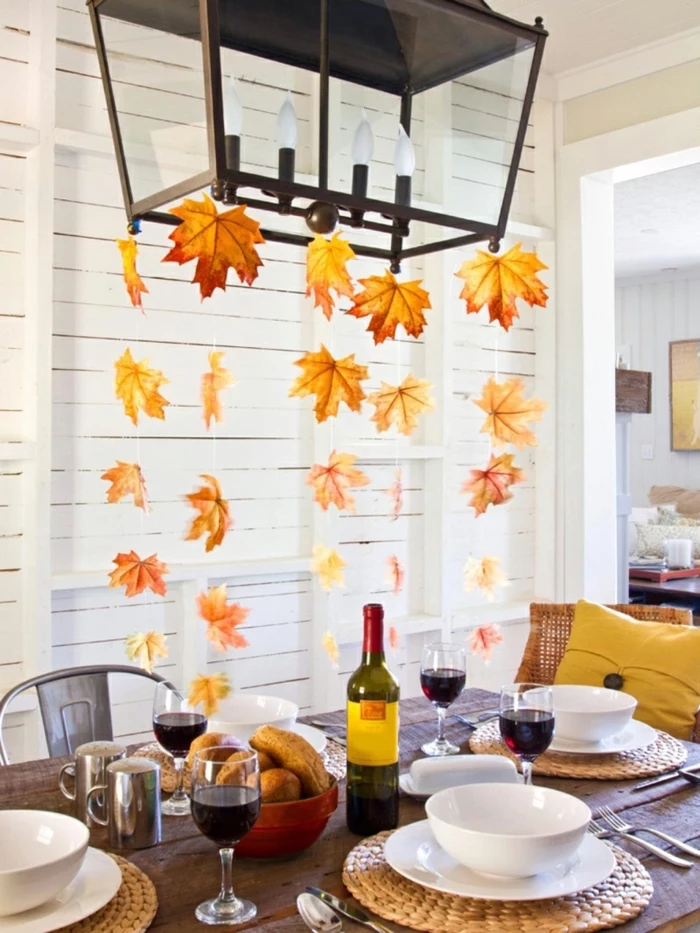
According to the U.S. Department of Agriculture, it’s estimated that 30-40% of the food supply is wasted.
Combat this by making your decor edible. A beautiful bowl of varied apples, a garland of cranberries and popcorn, or arrangements featuring artichokes, pomegranates, and colorful winter squashes look beautiful and can be cooked and enjoyed after the holiday.
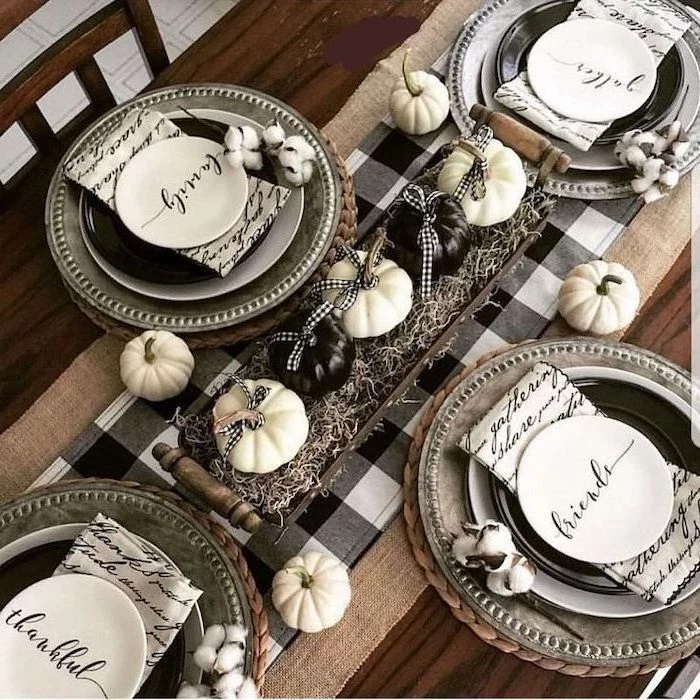
Don’t just decorate the table—look up! Hanging a simple branch or a lightweight dried floral installation above the dining table creates a stunning, immersive effect. Securely suspend it from the ceiling and hang lightweight elements like dried orange slices, ribbons, or small, empty glass baubles. It adds a layer of enchantment to the entire room.

